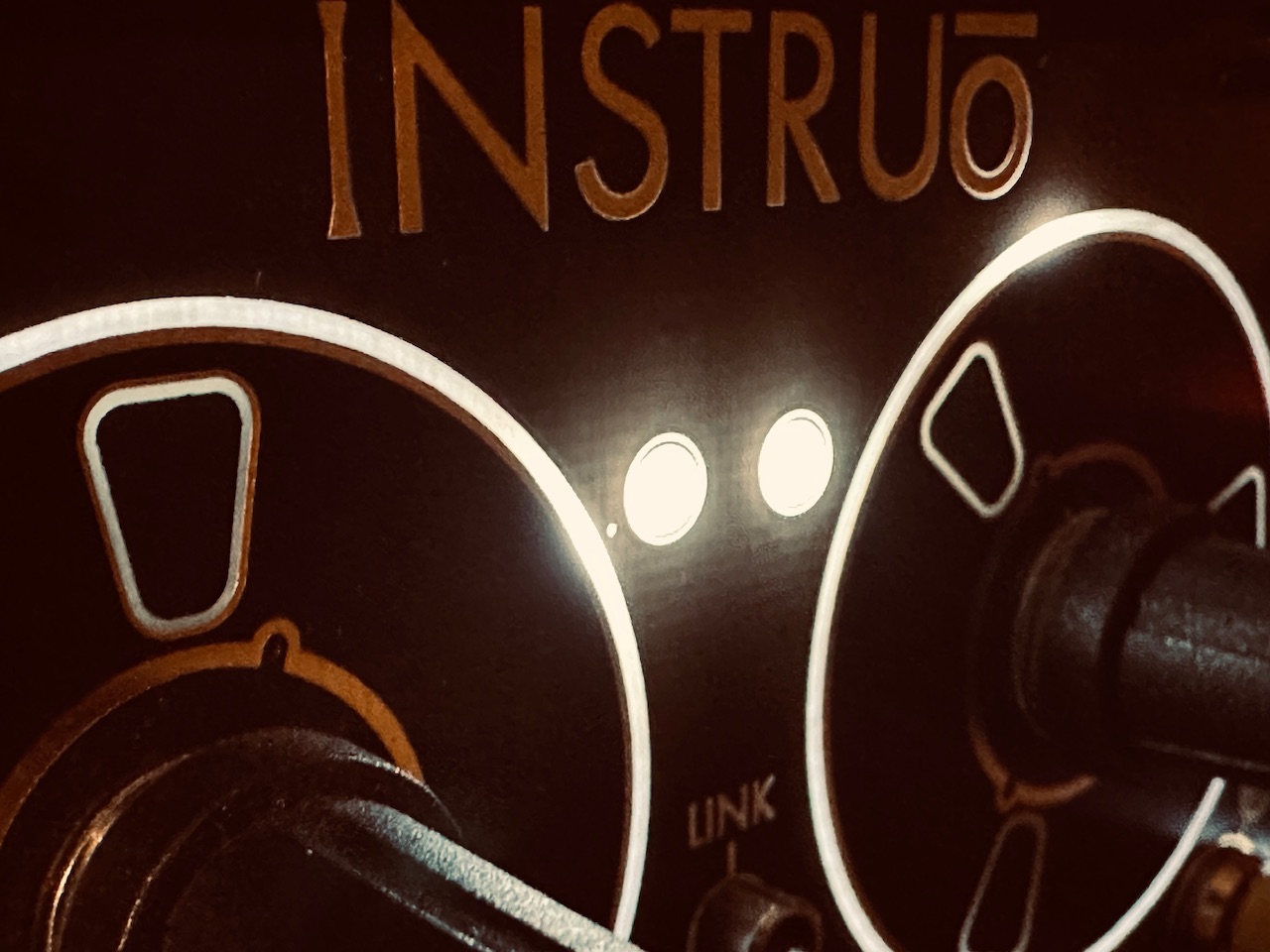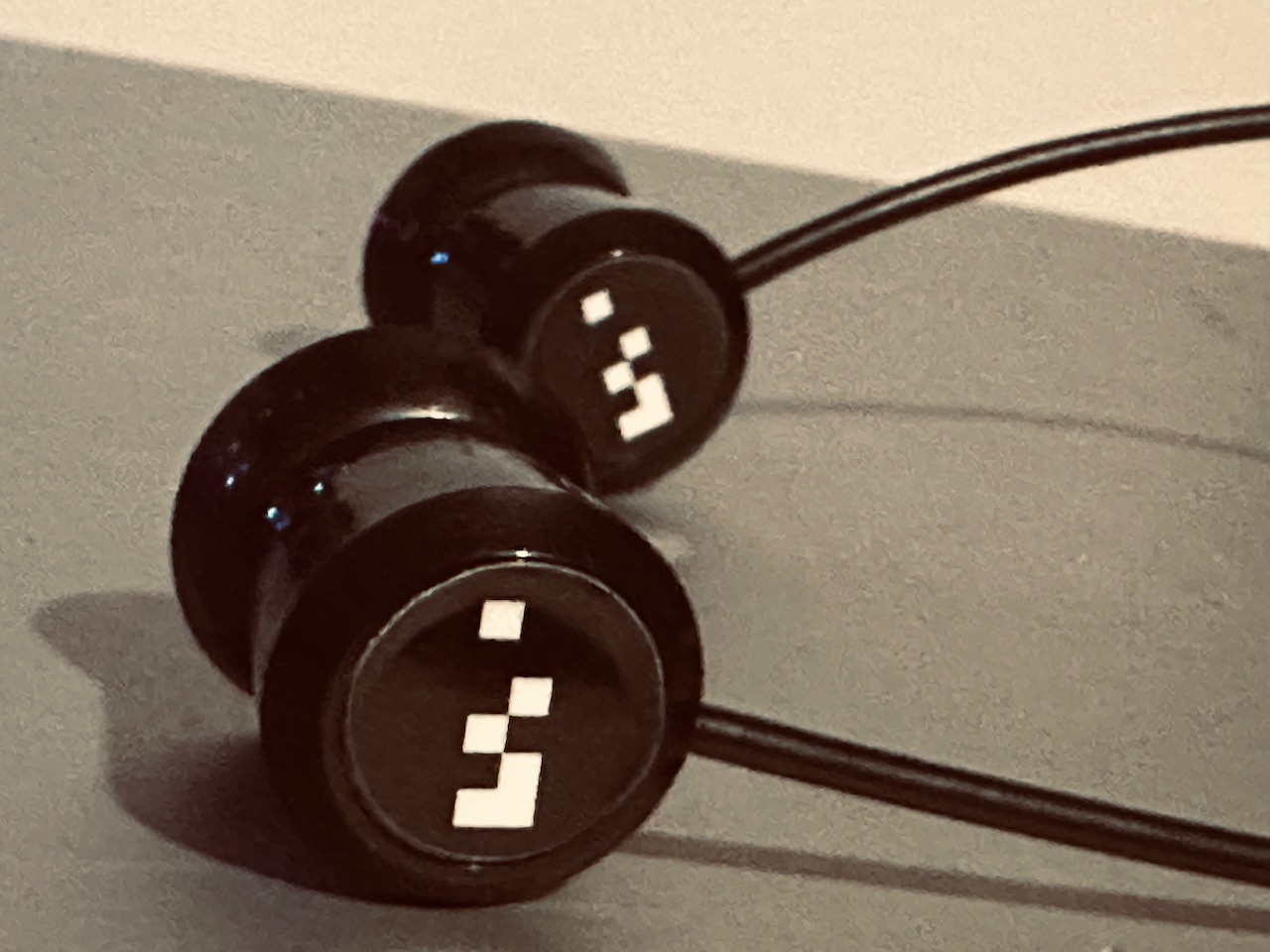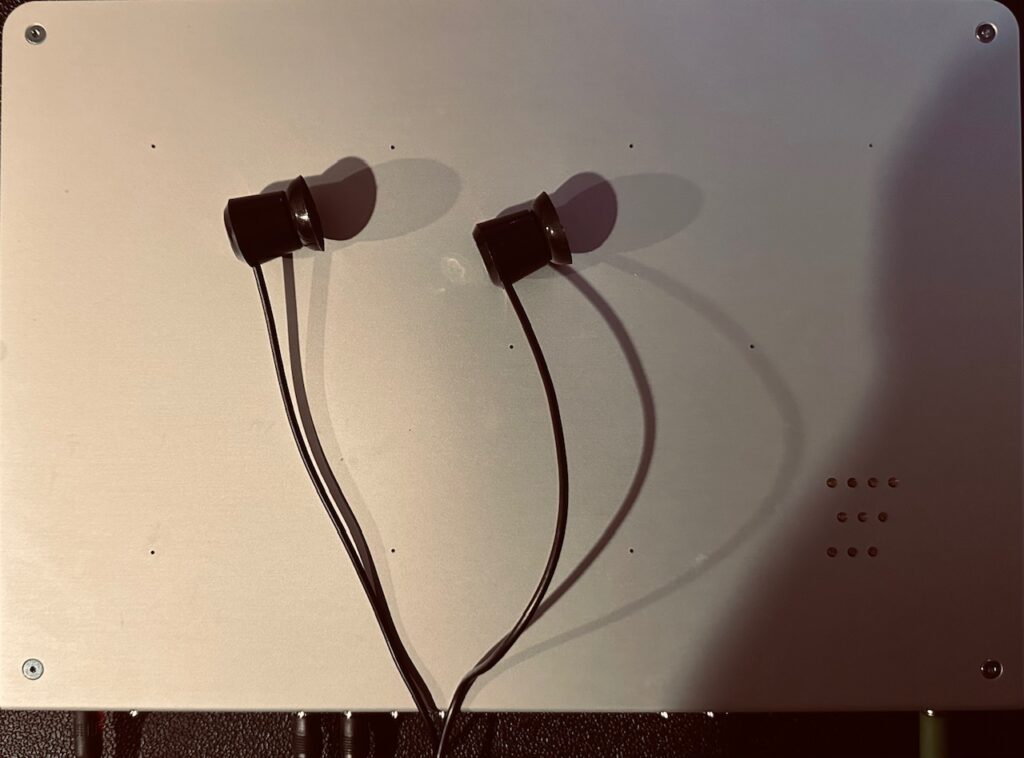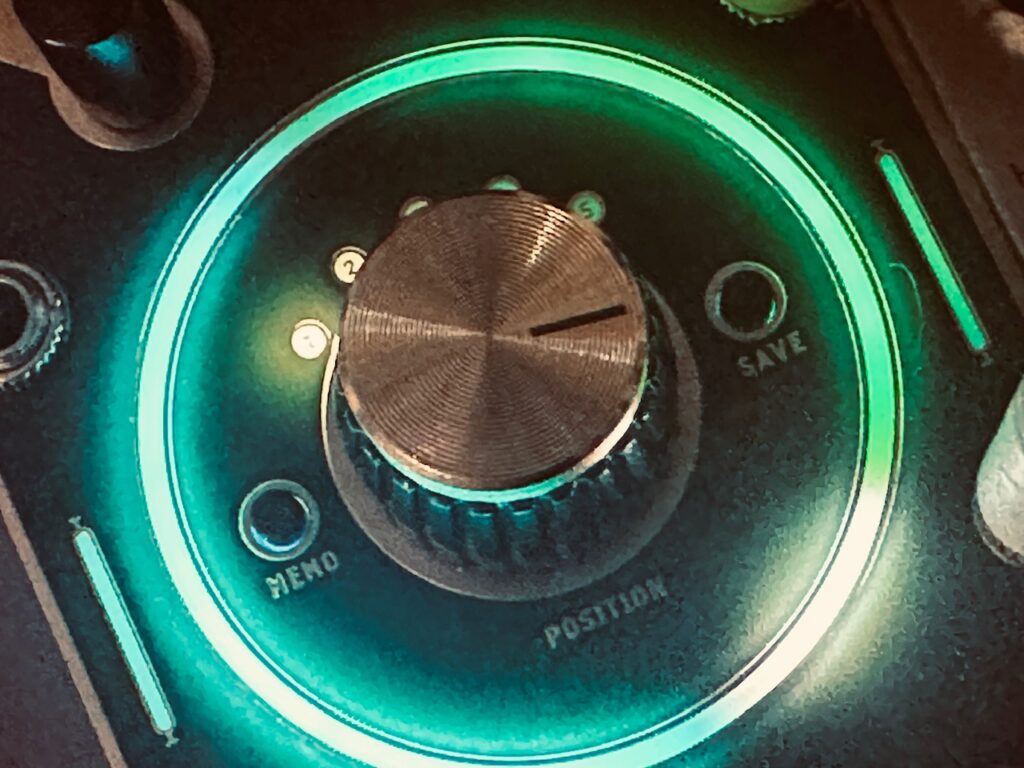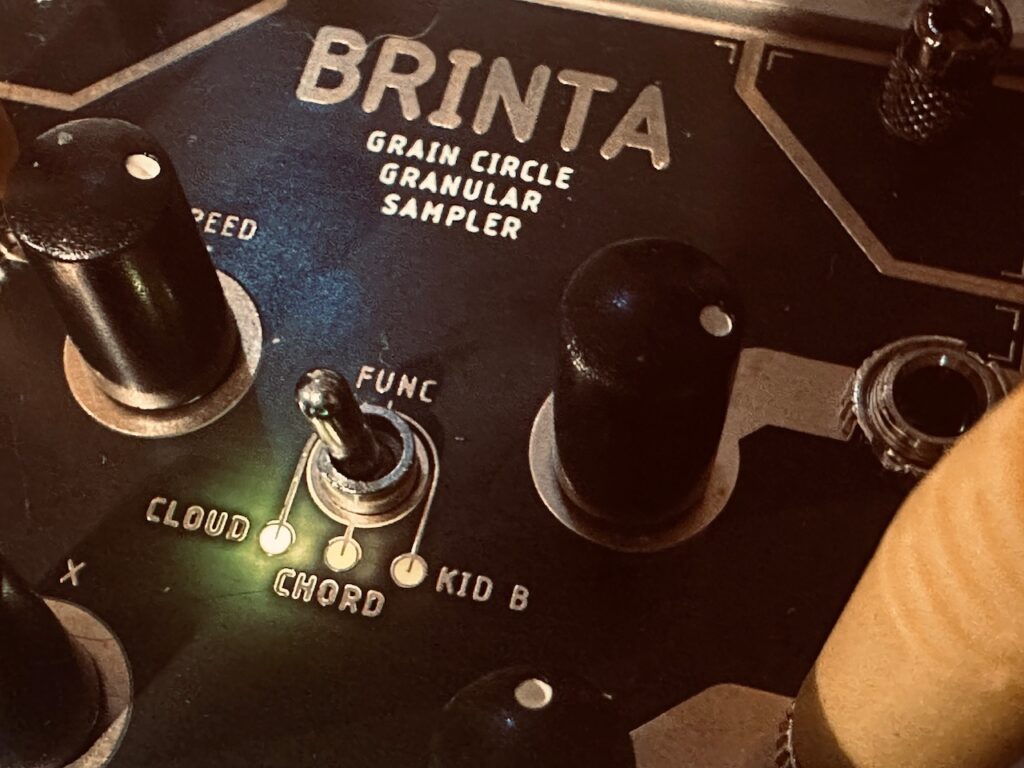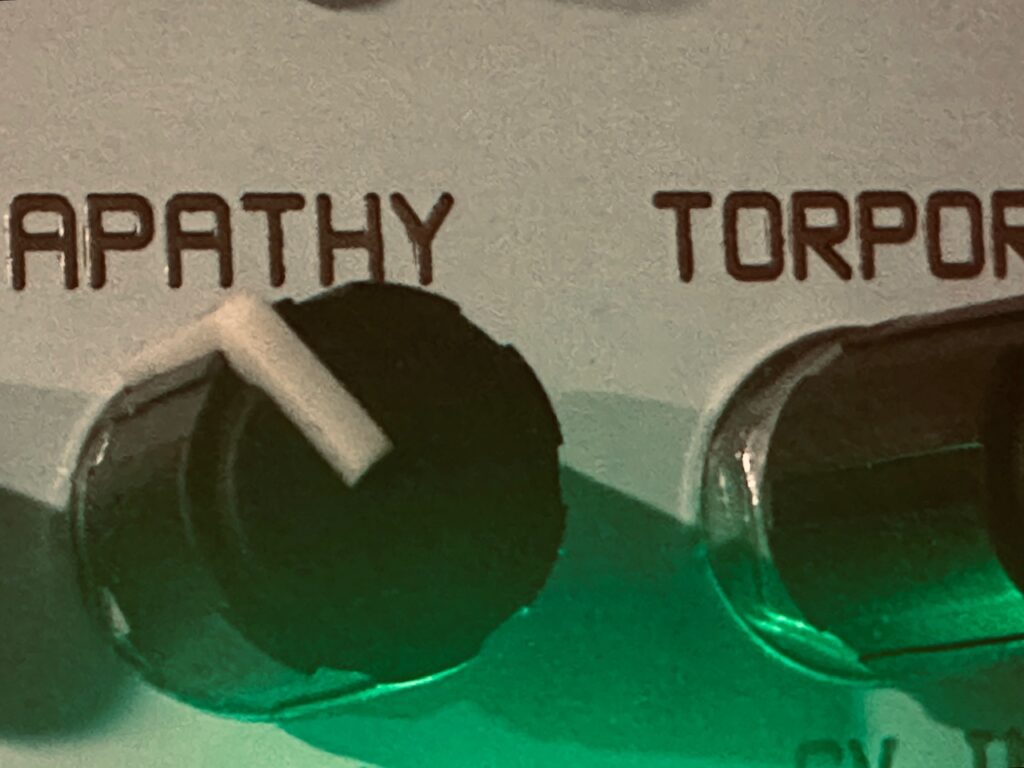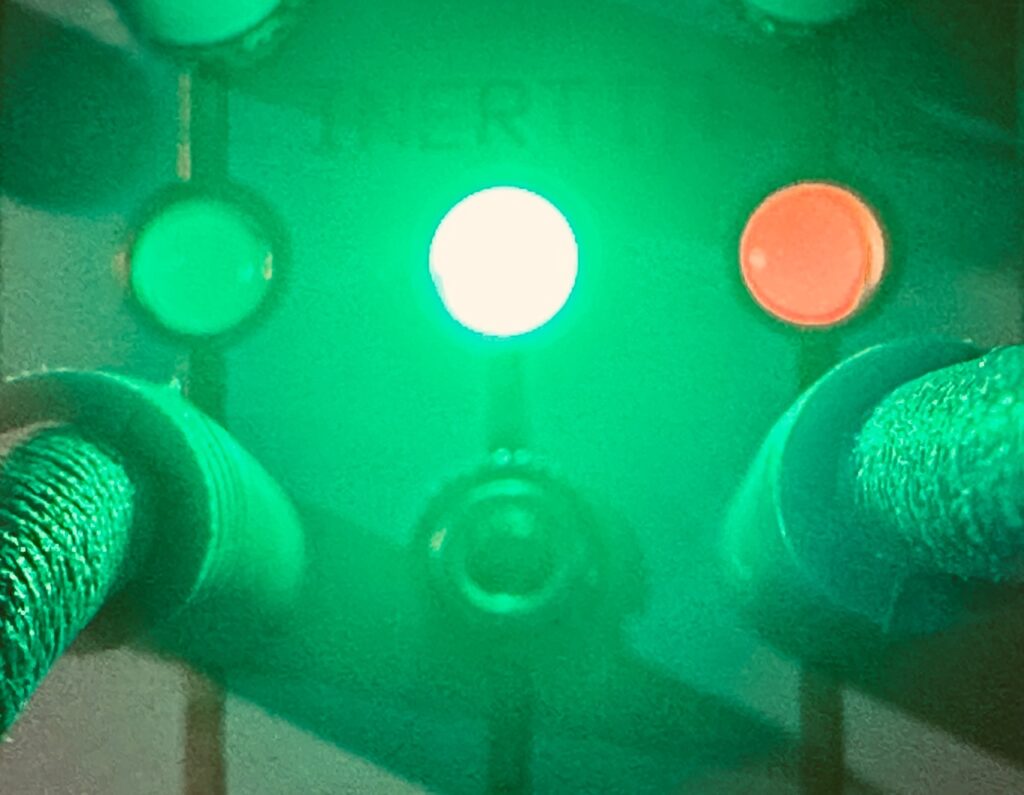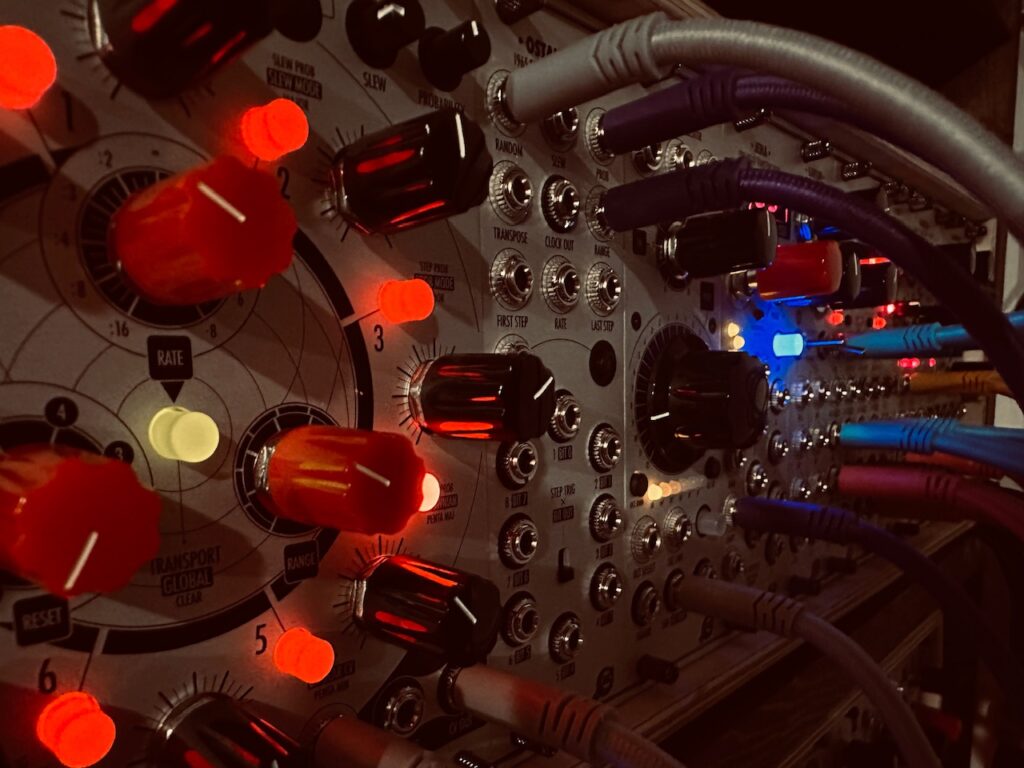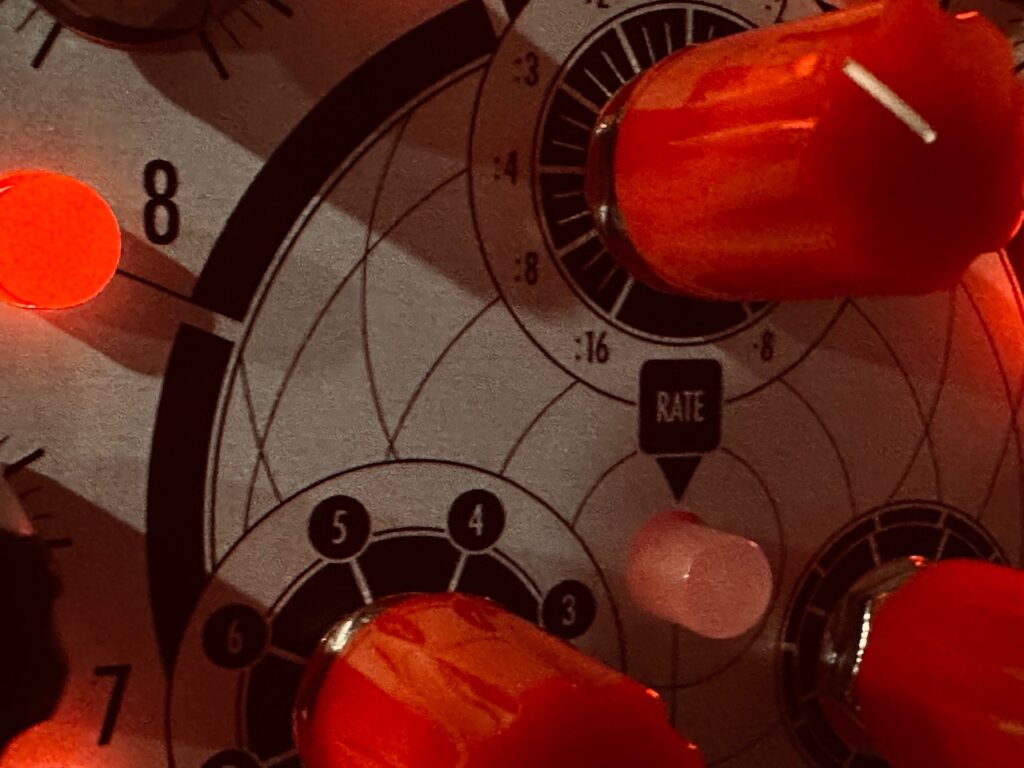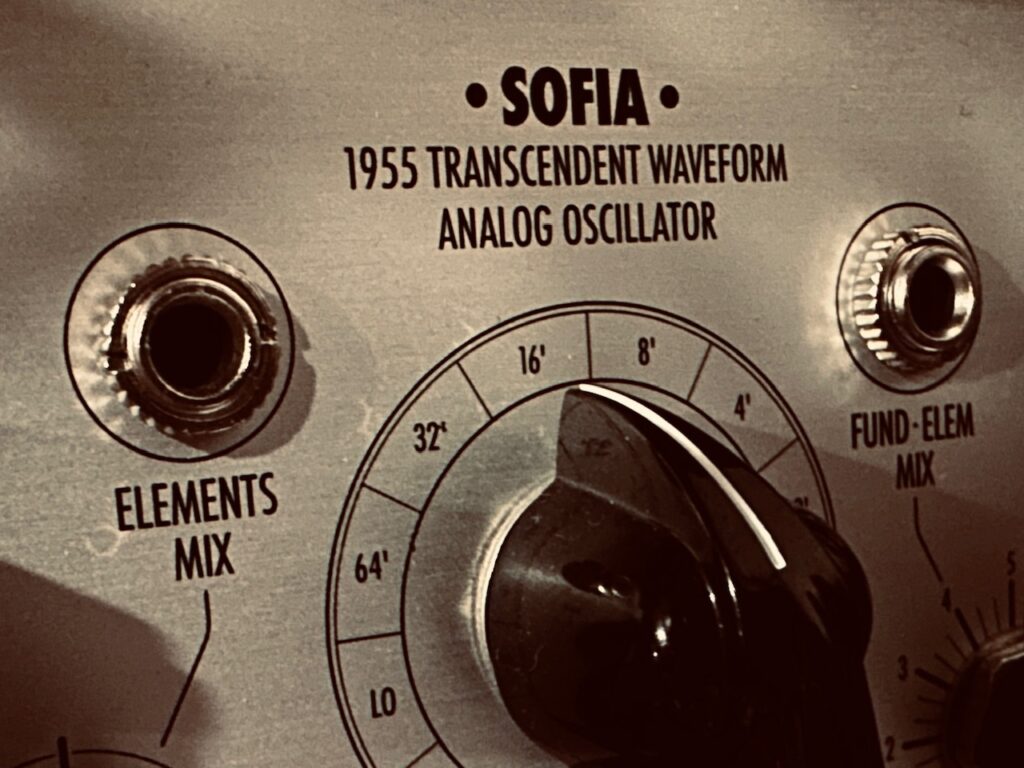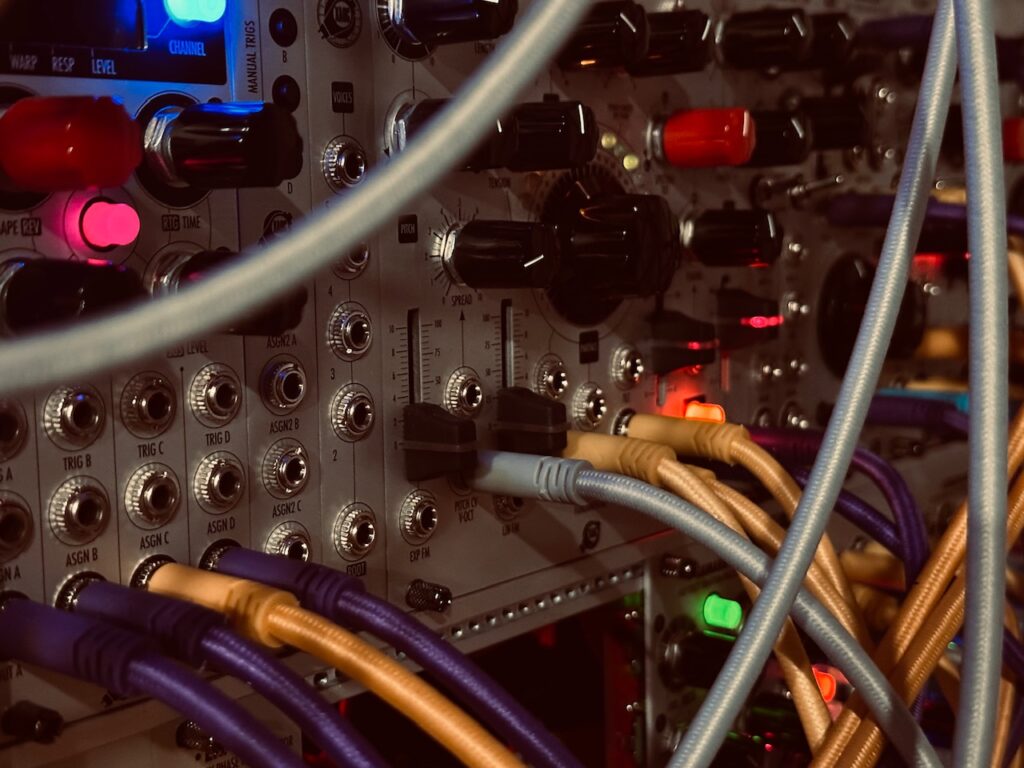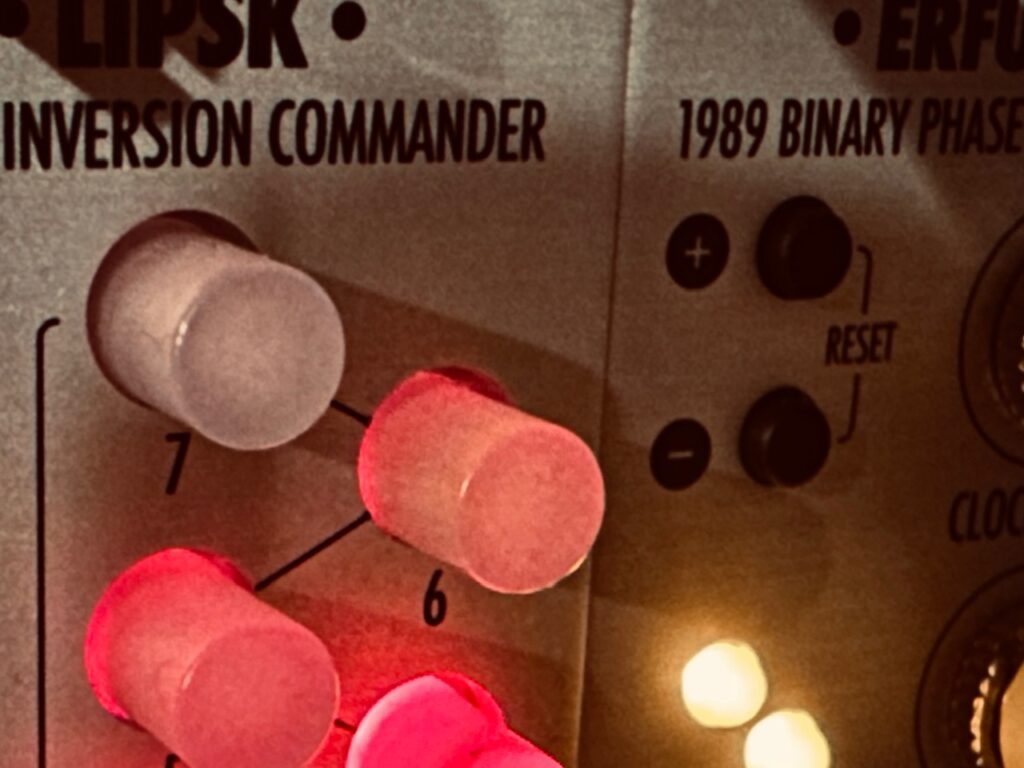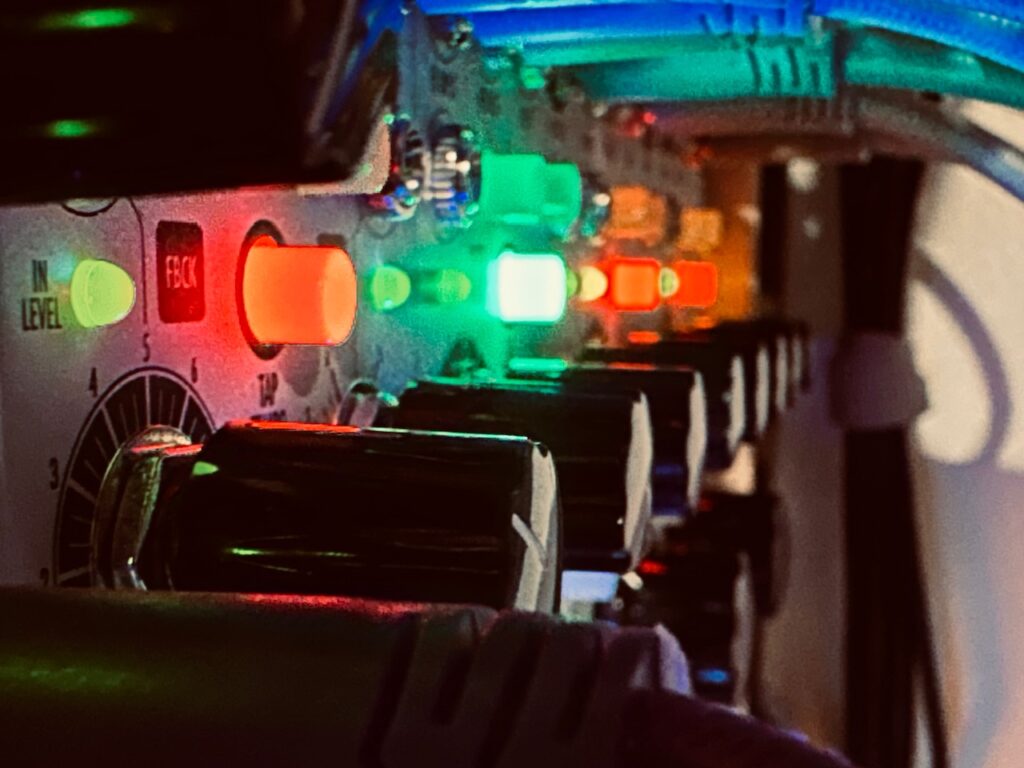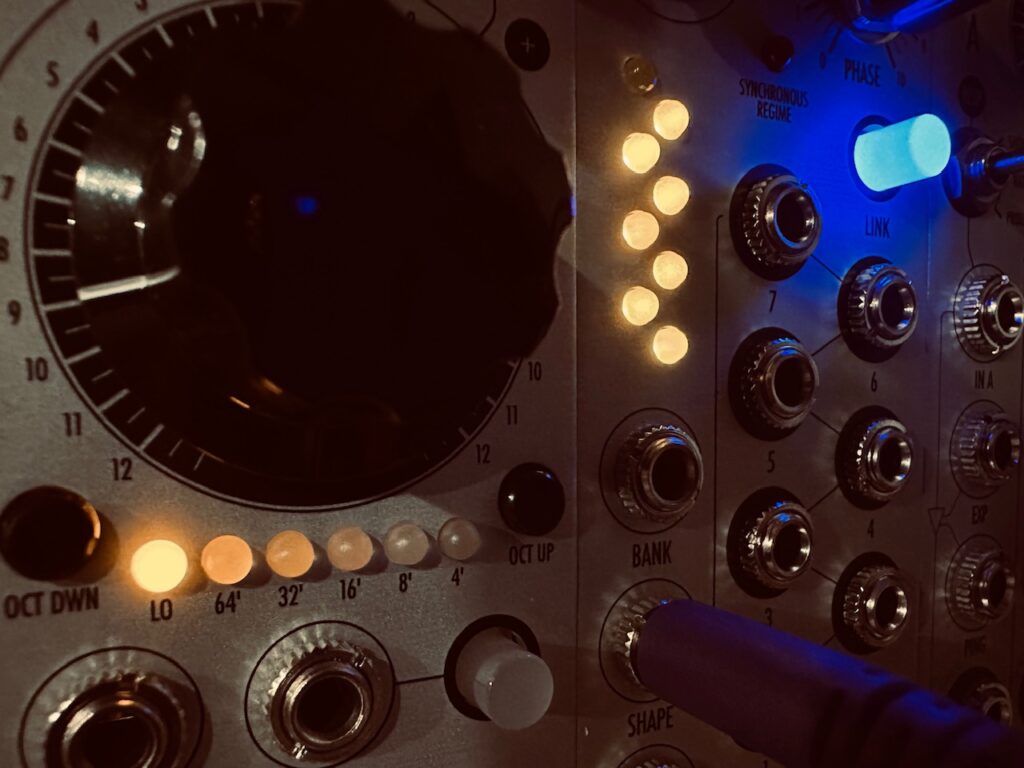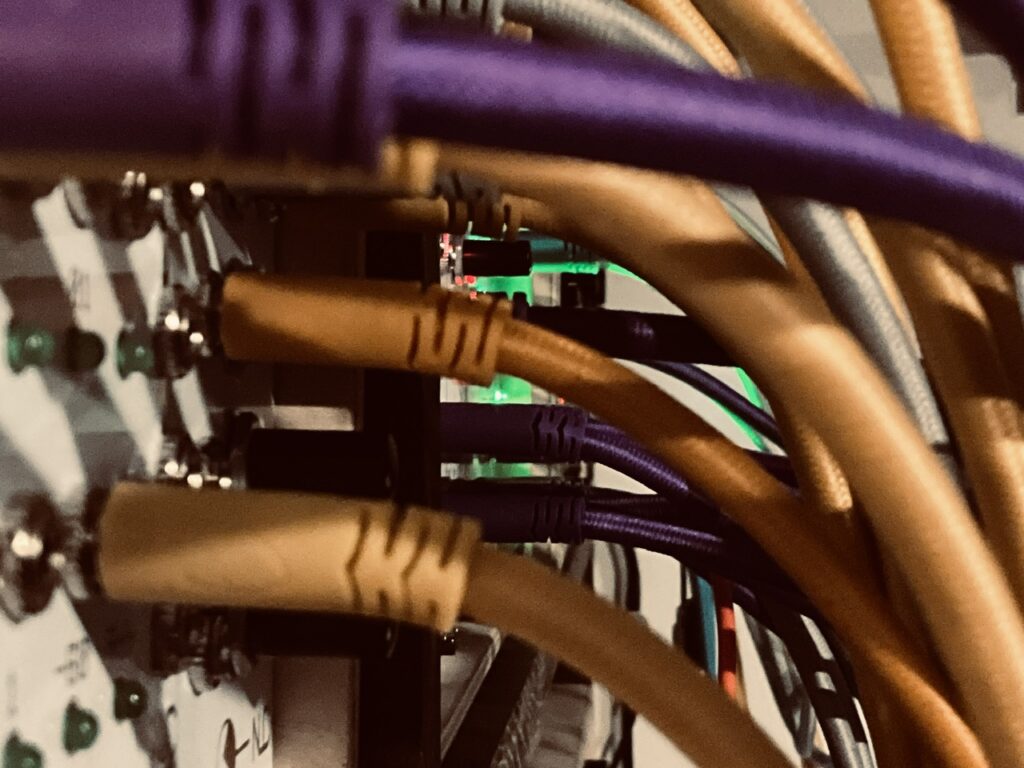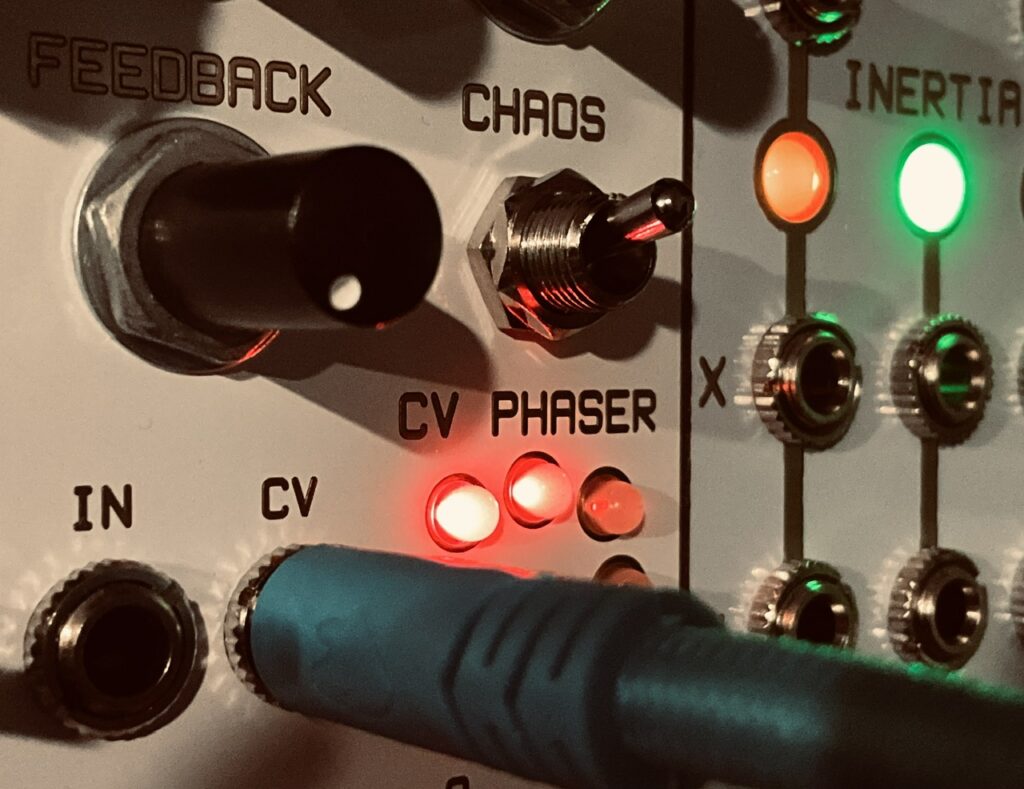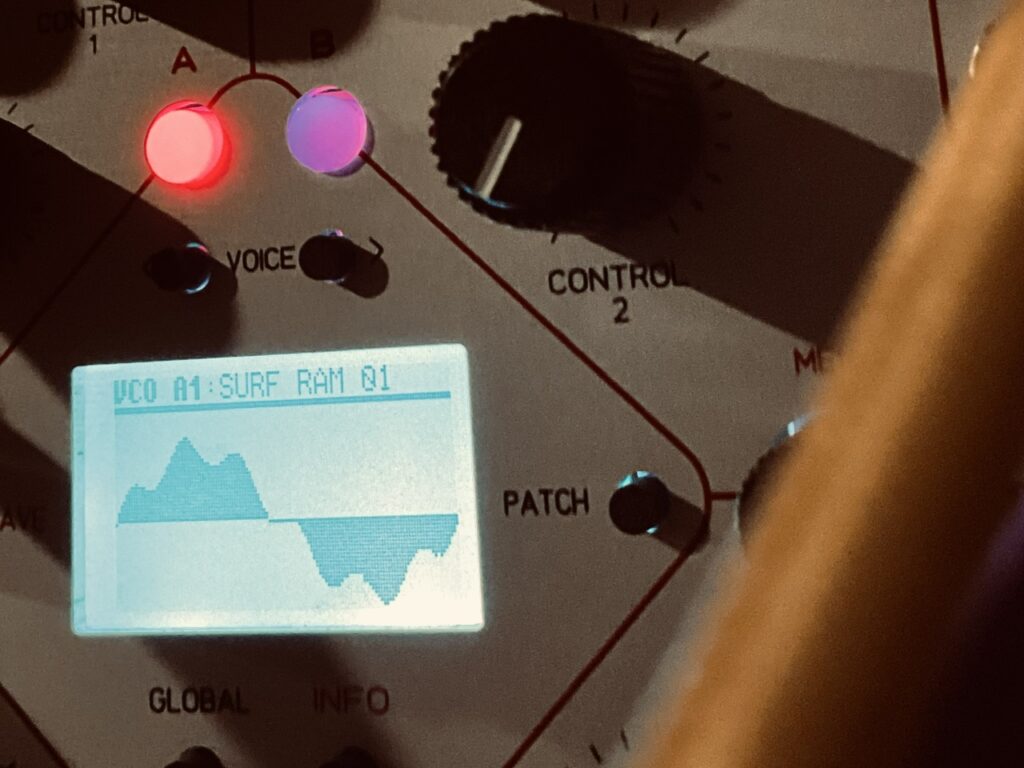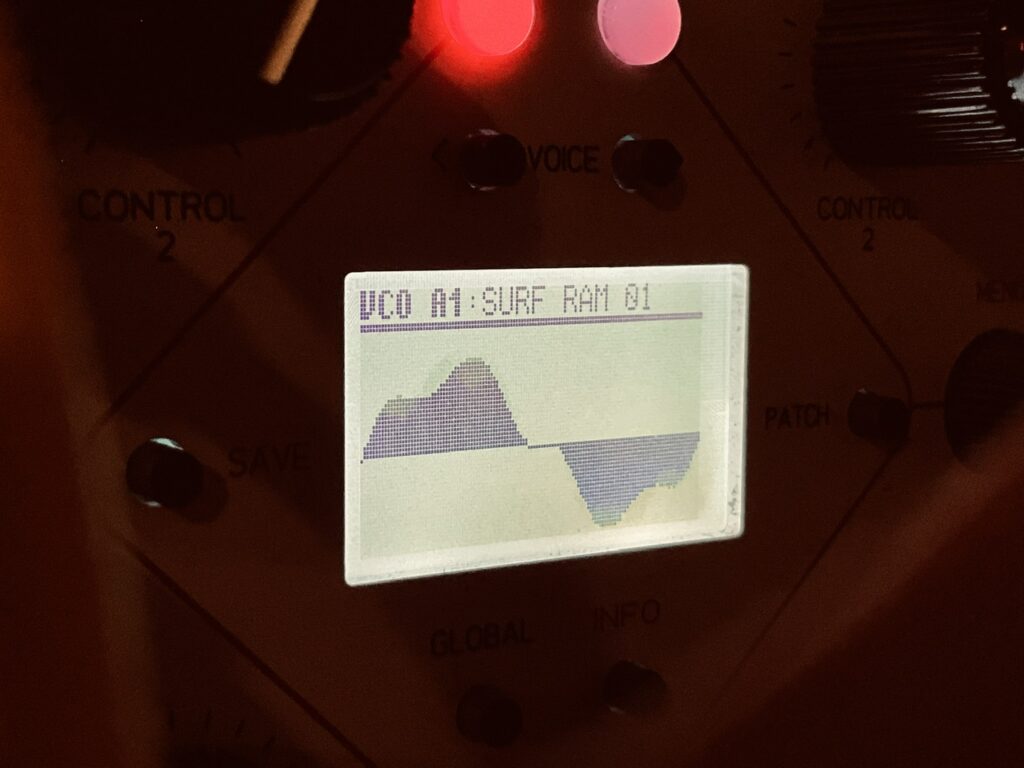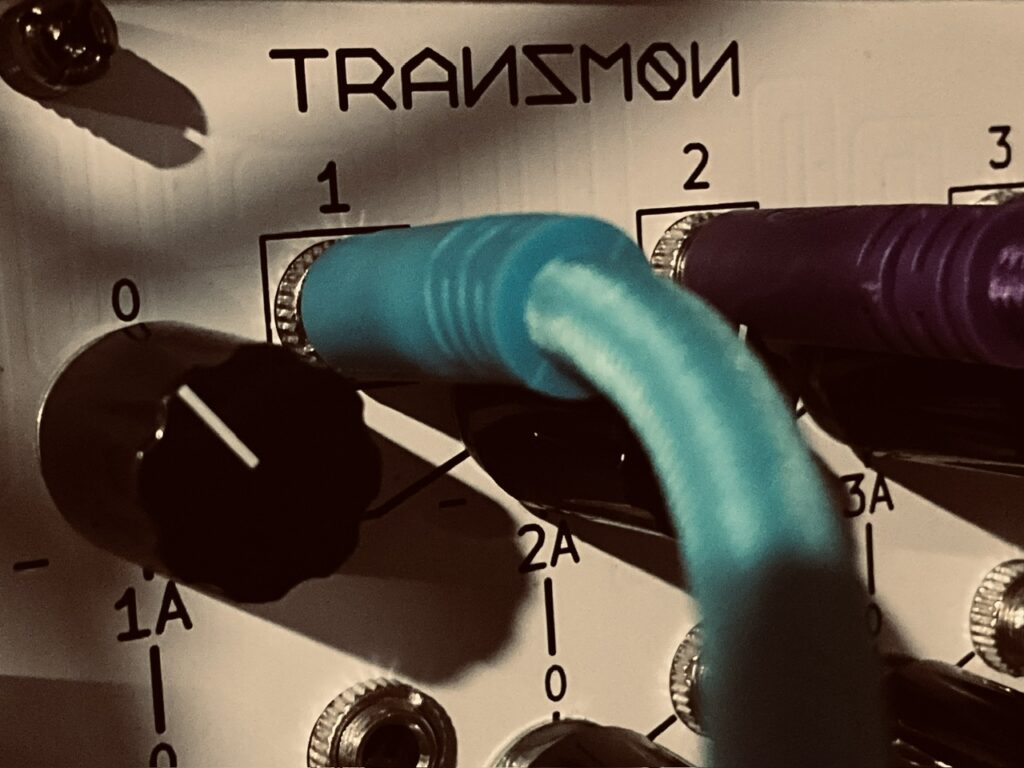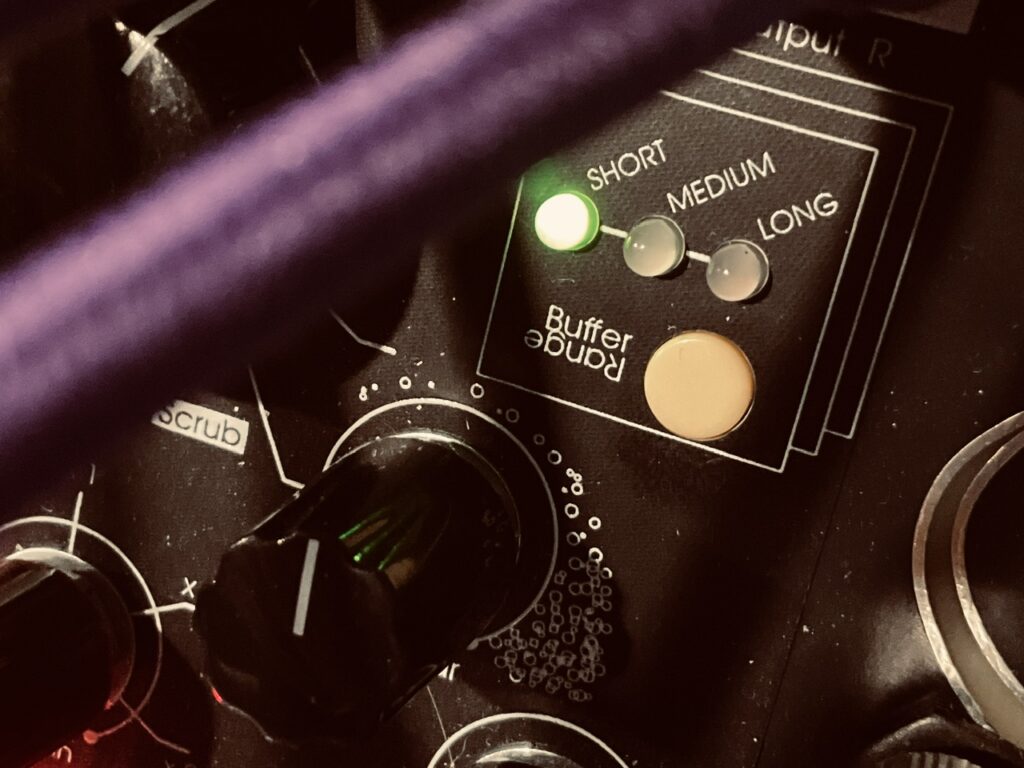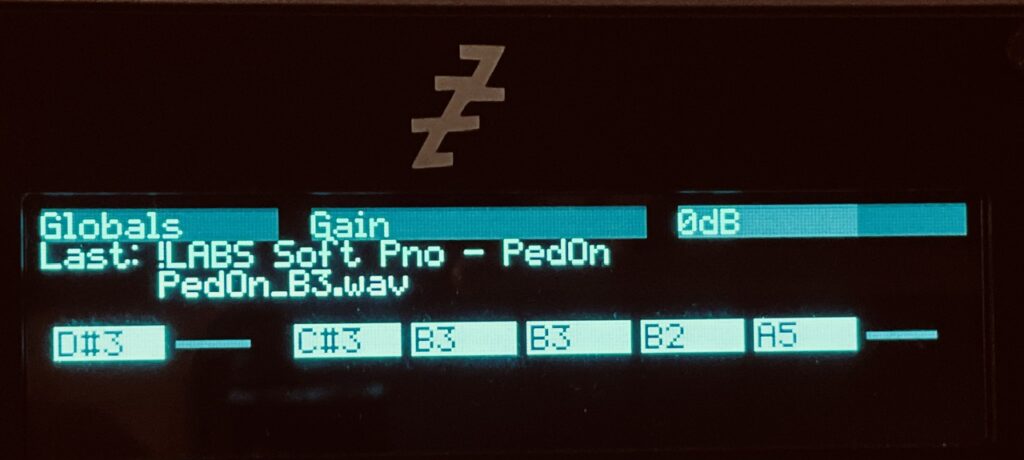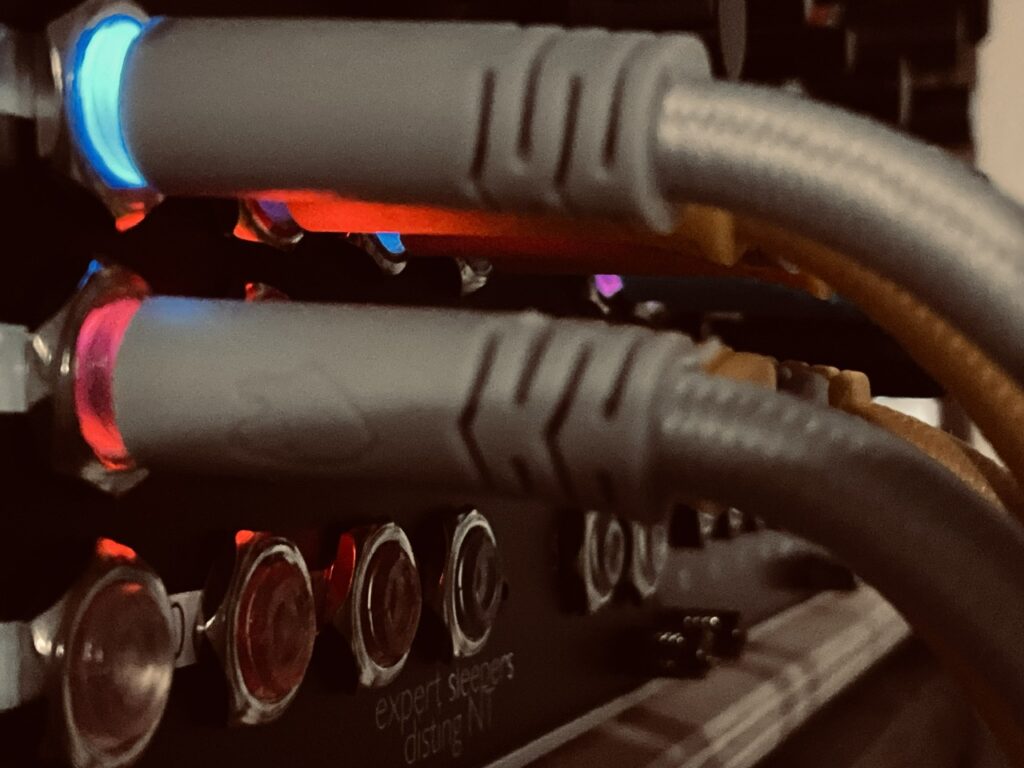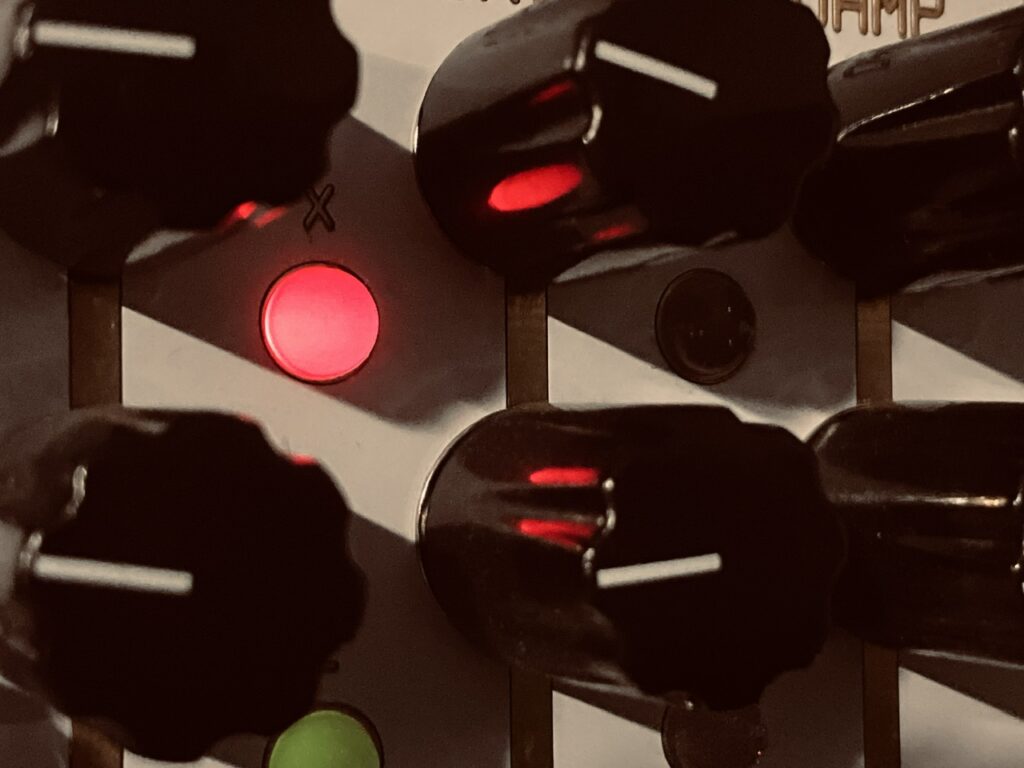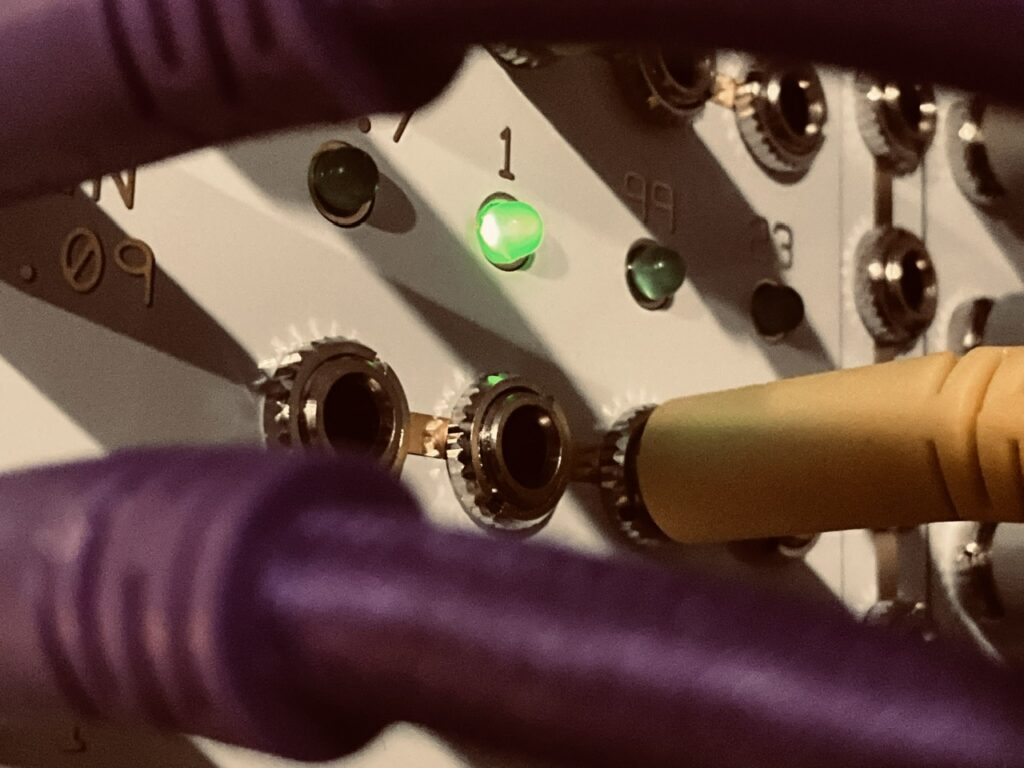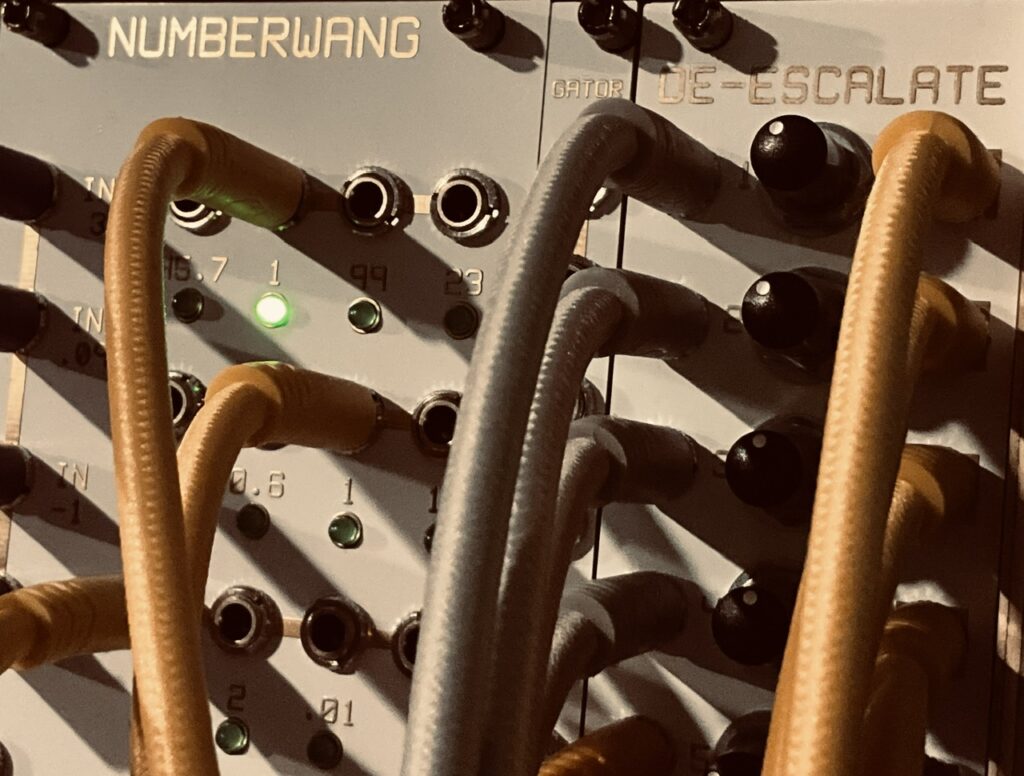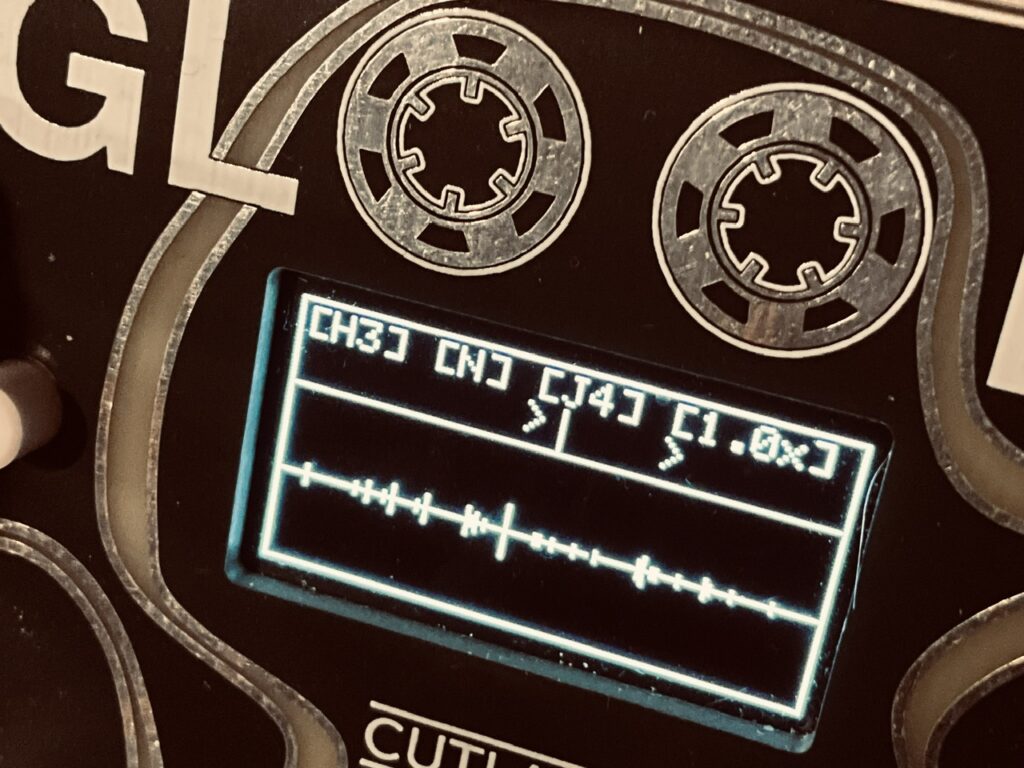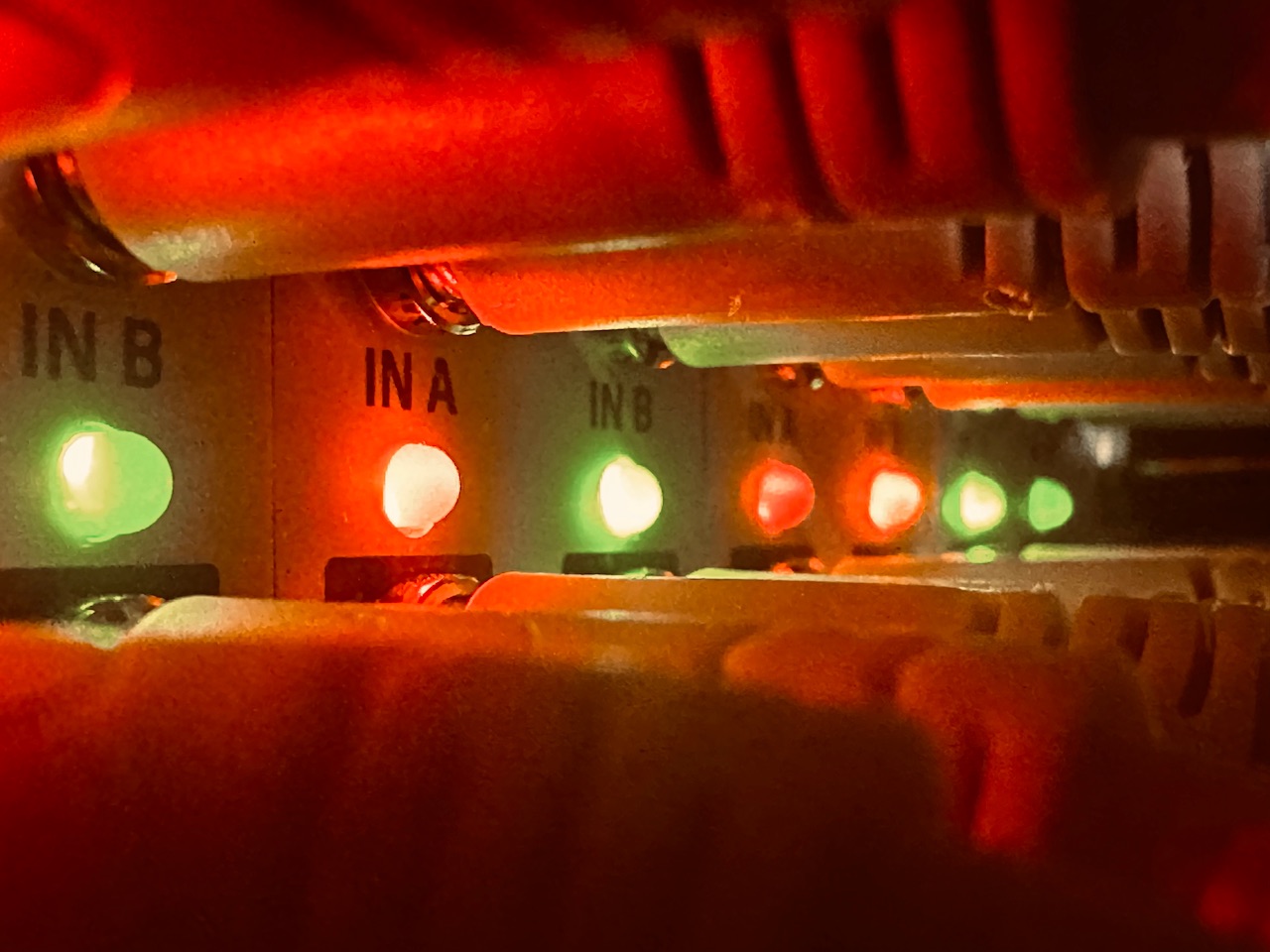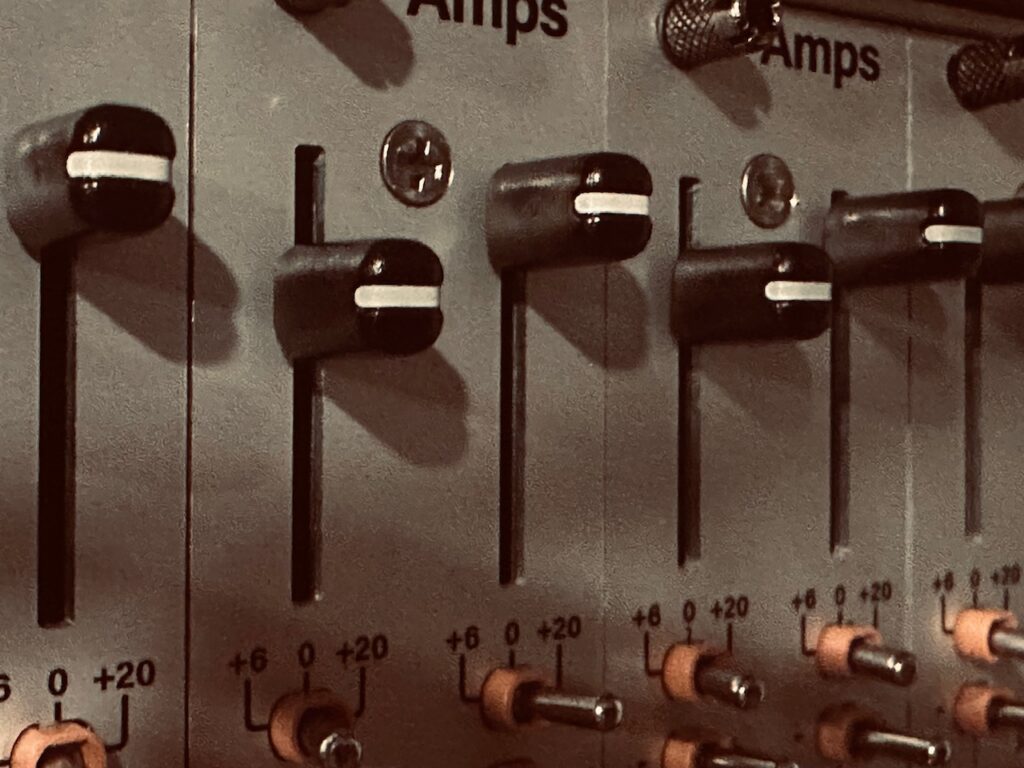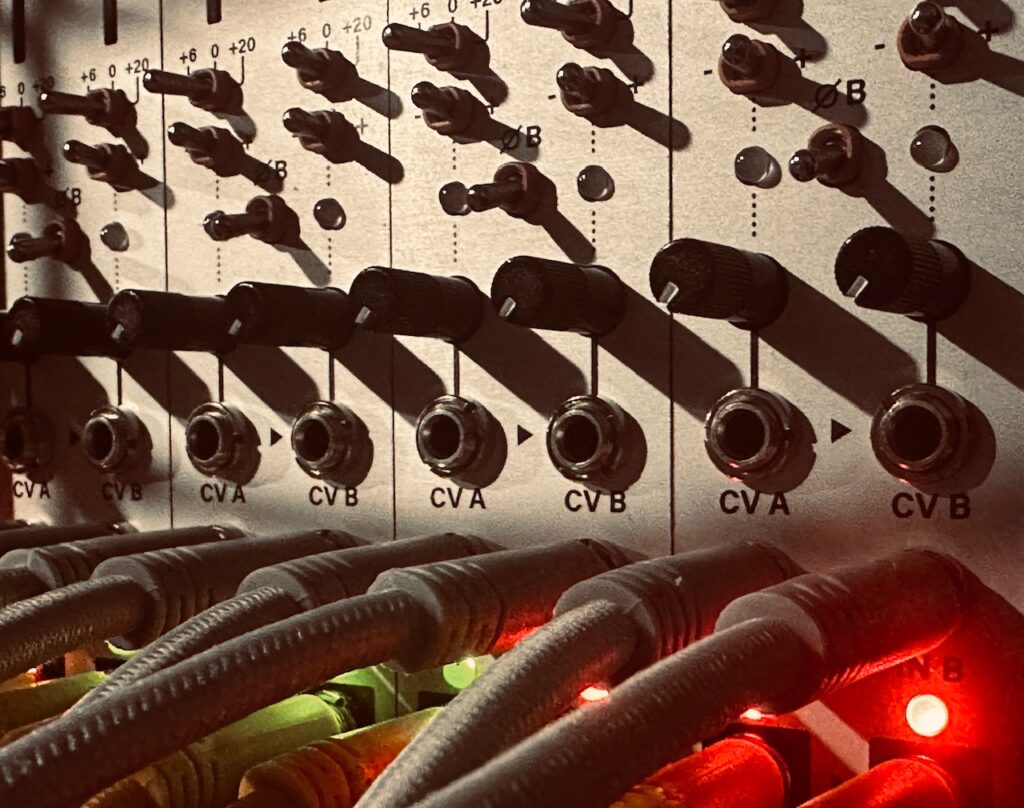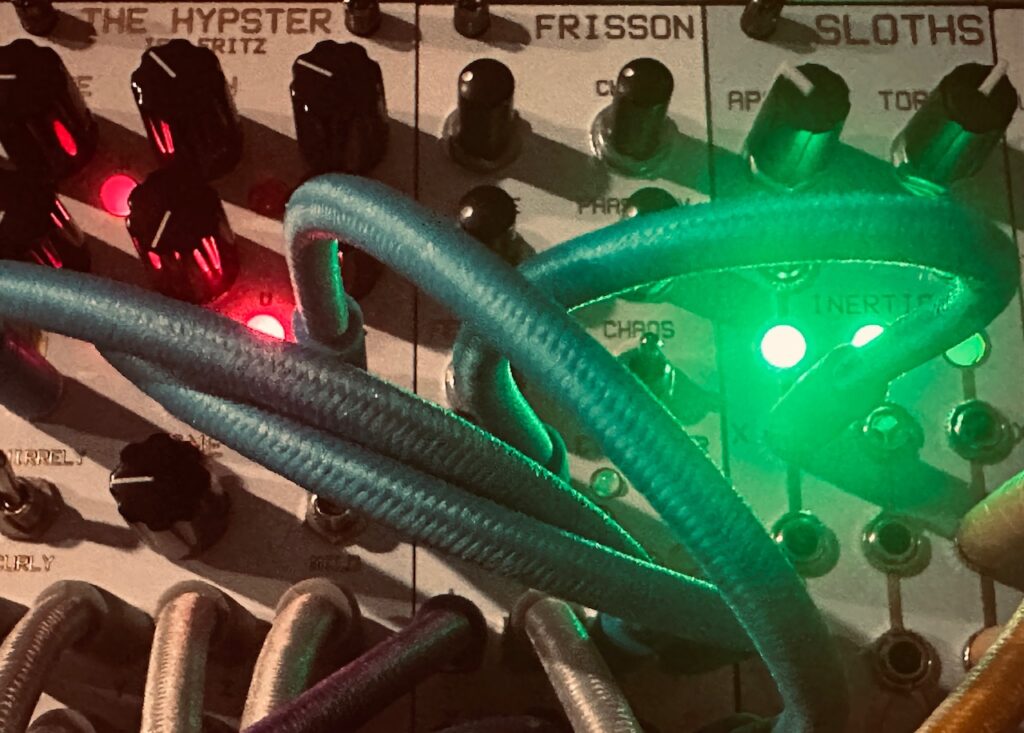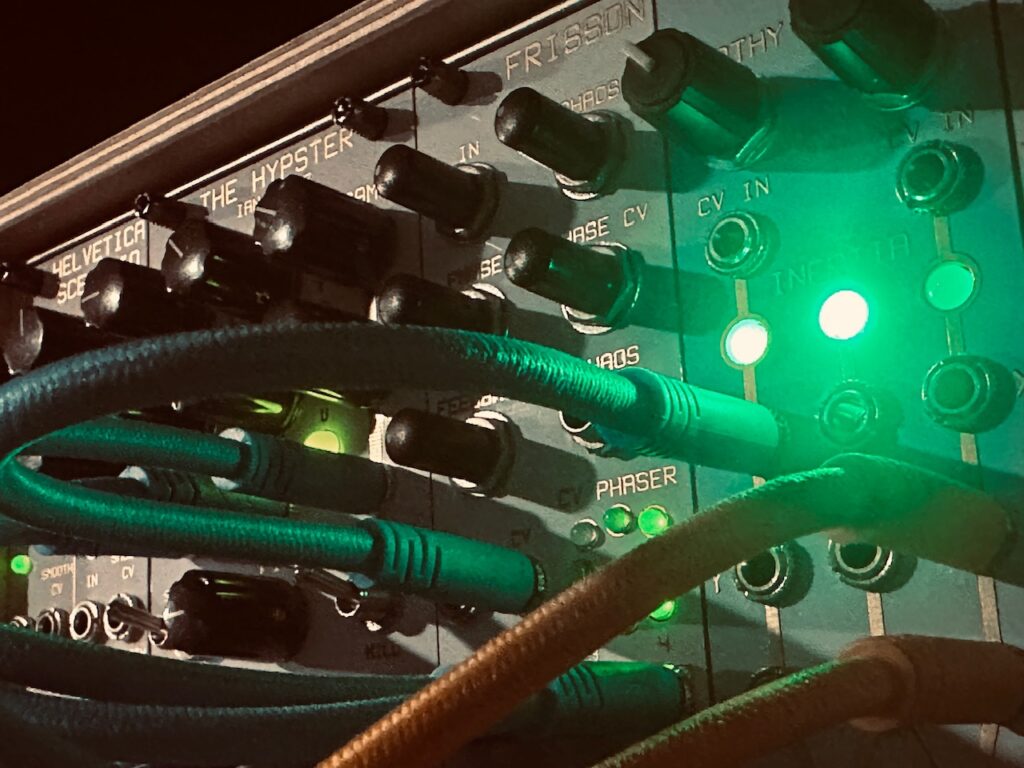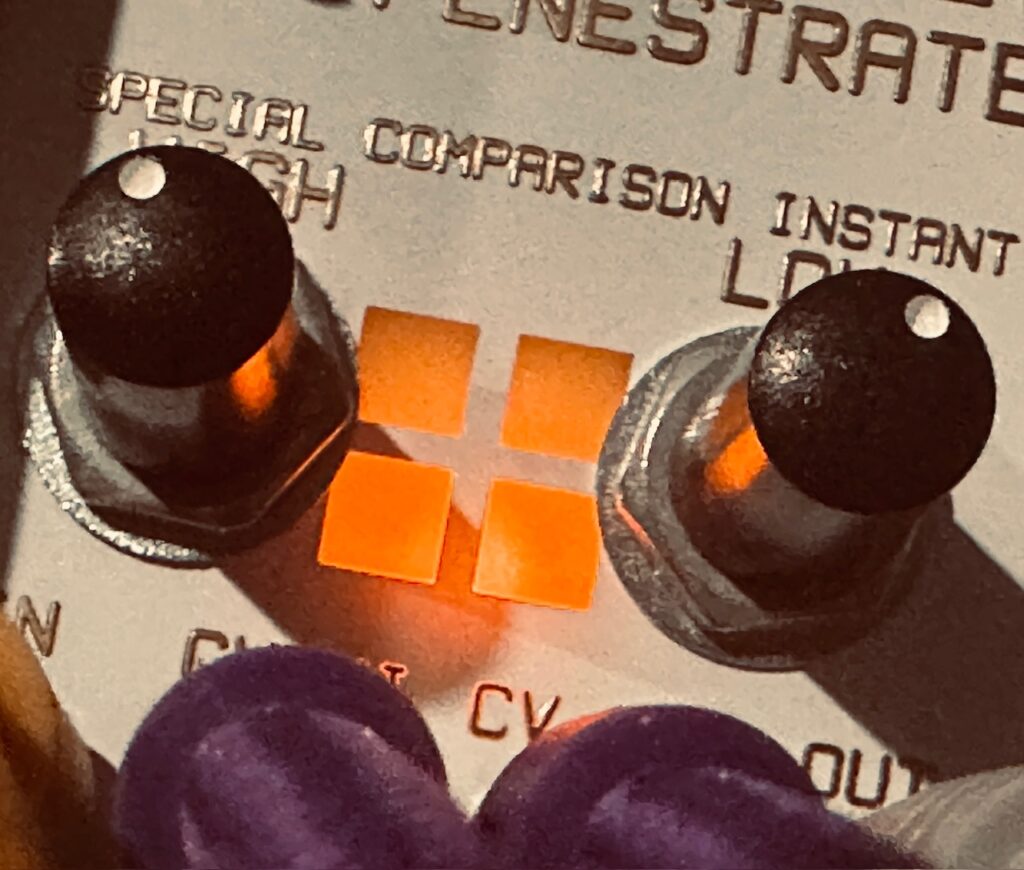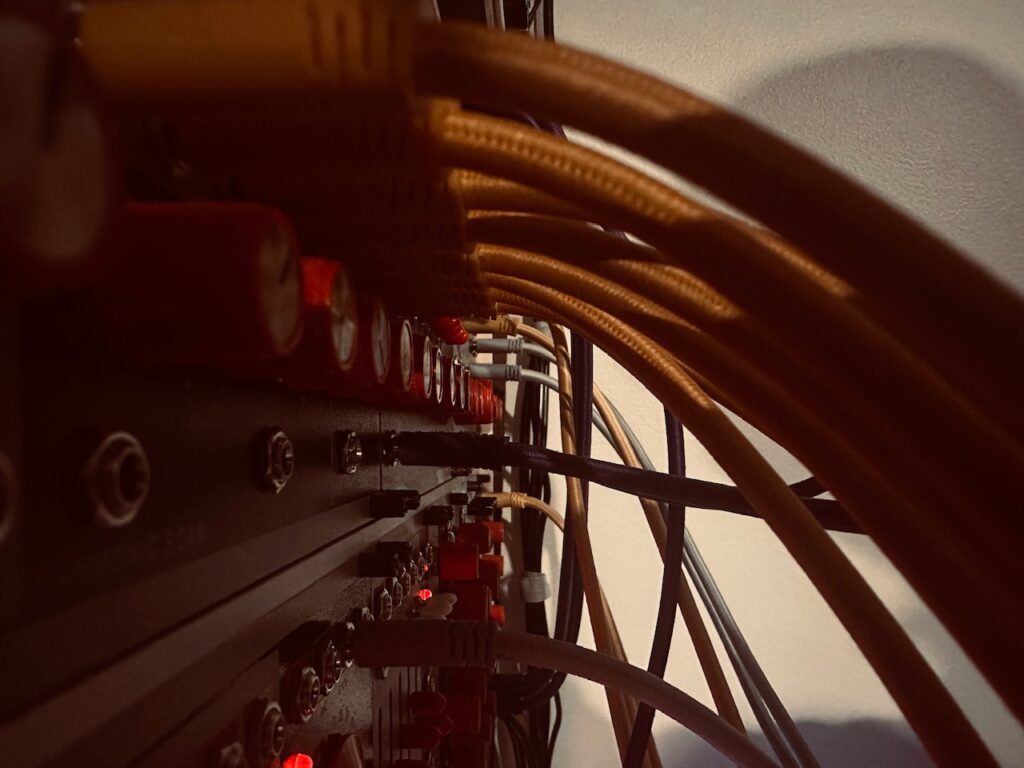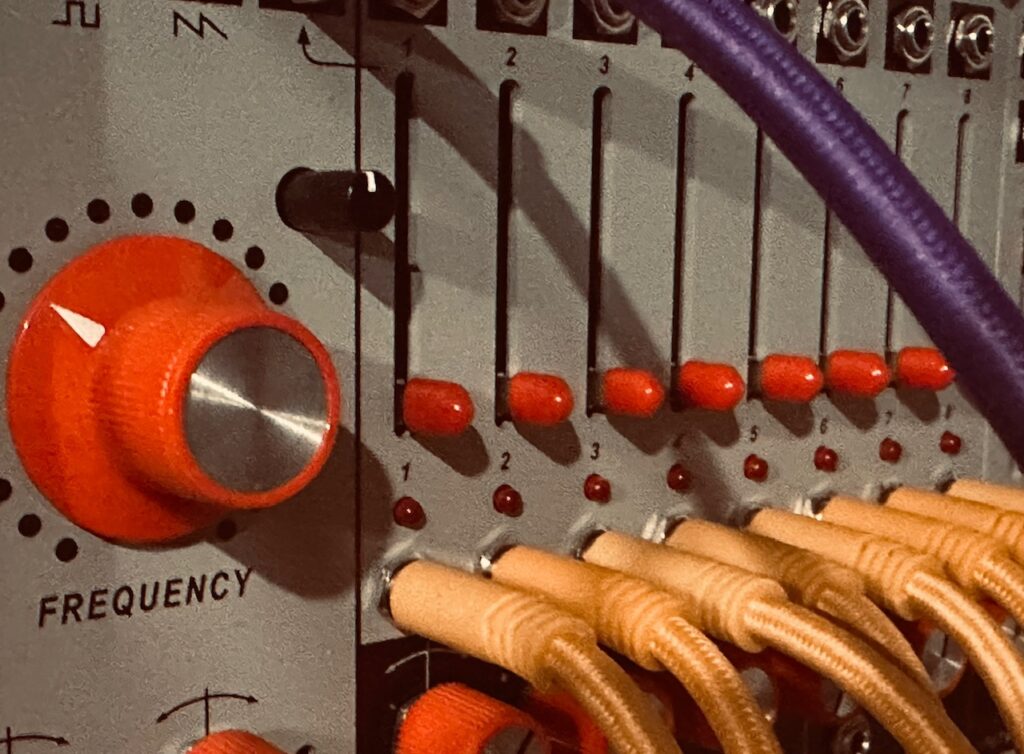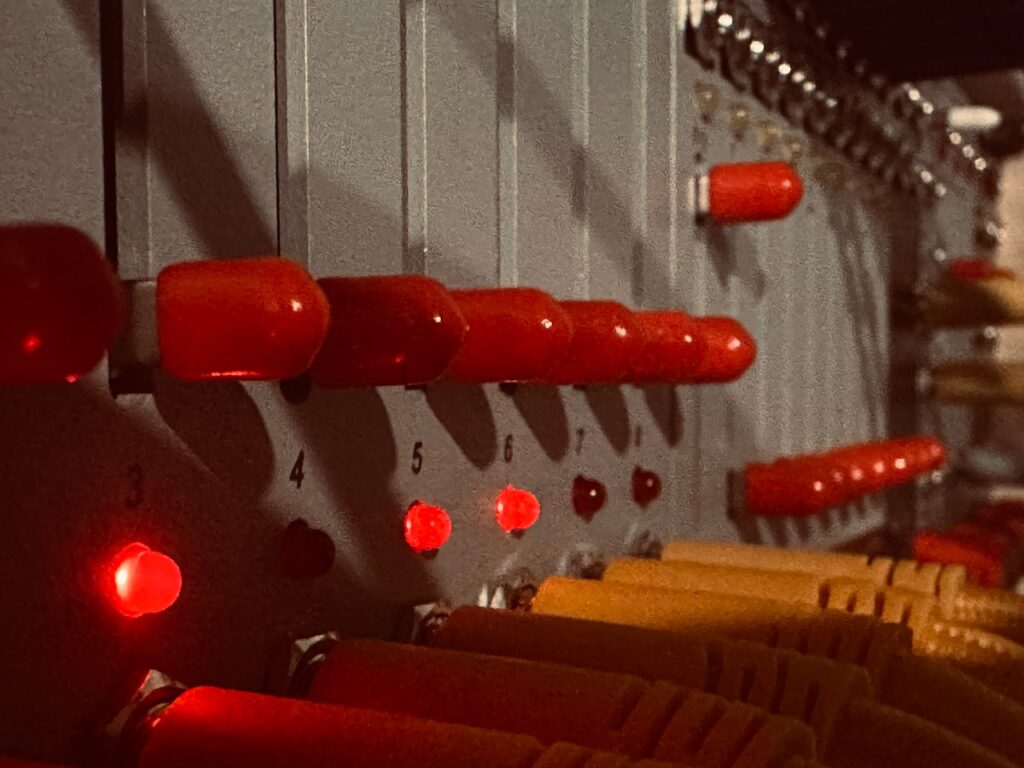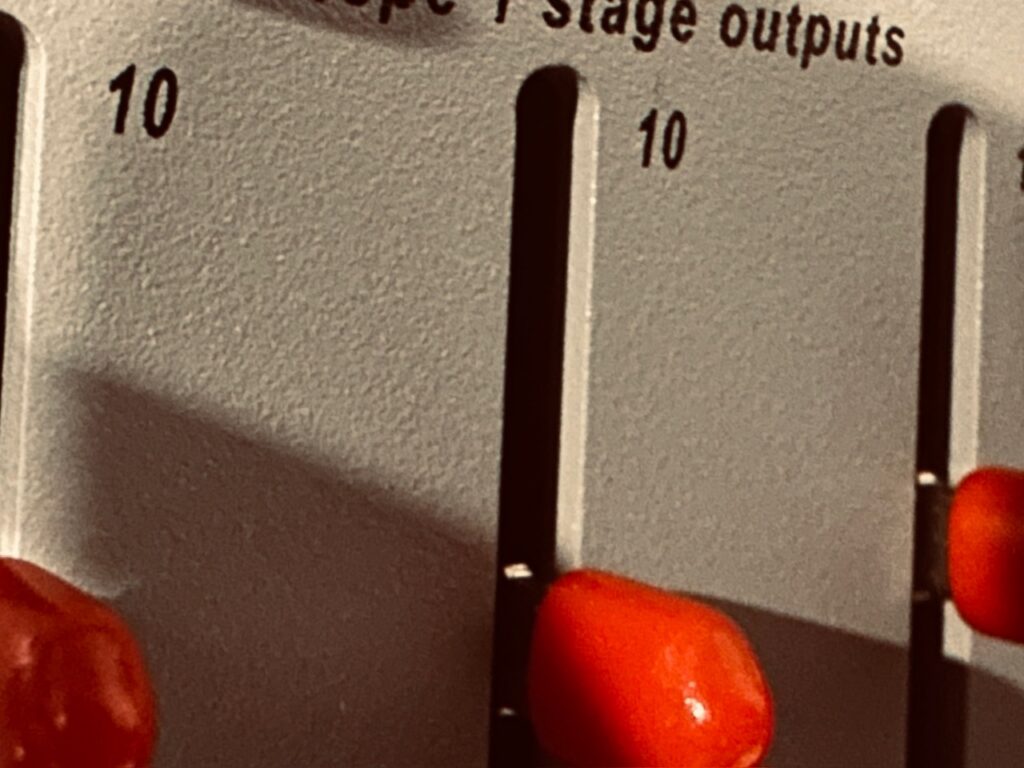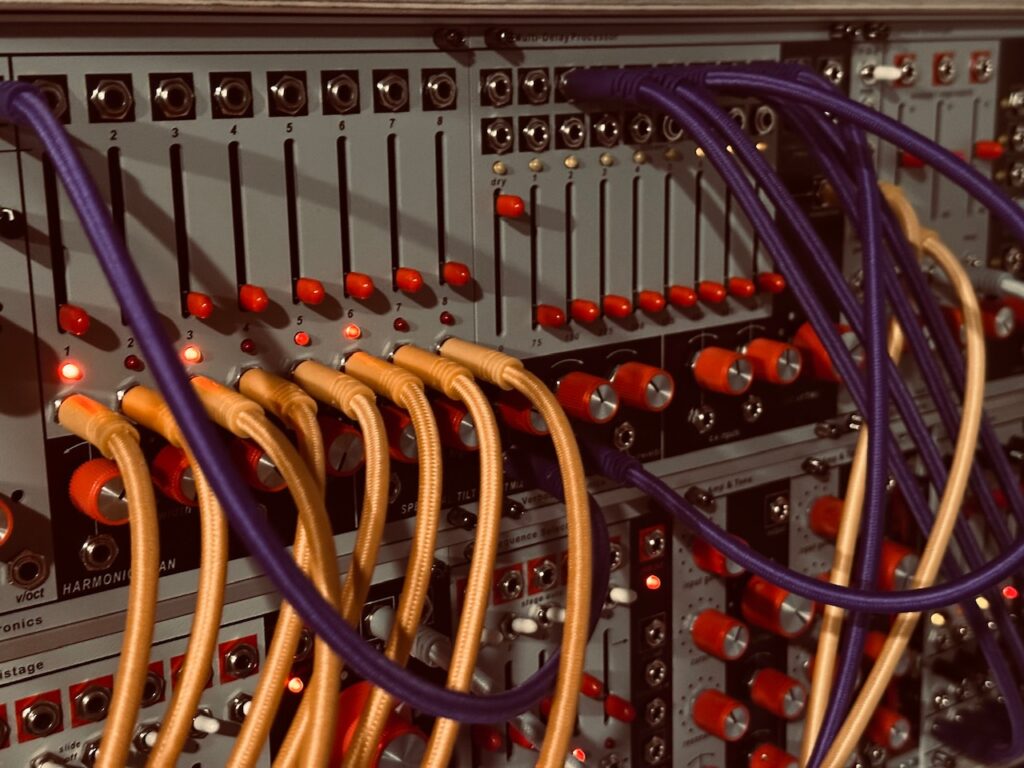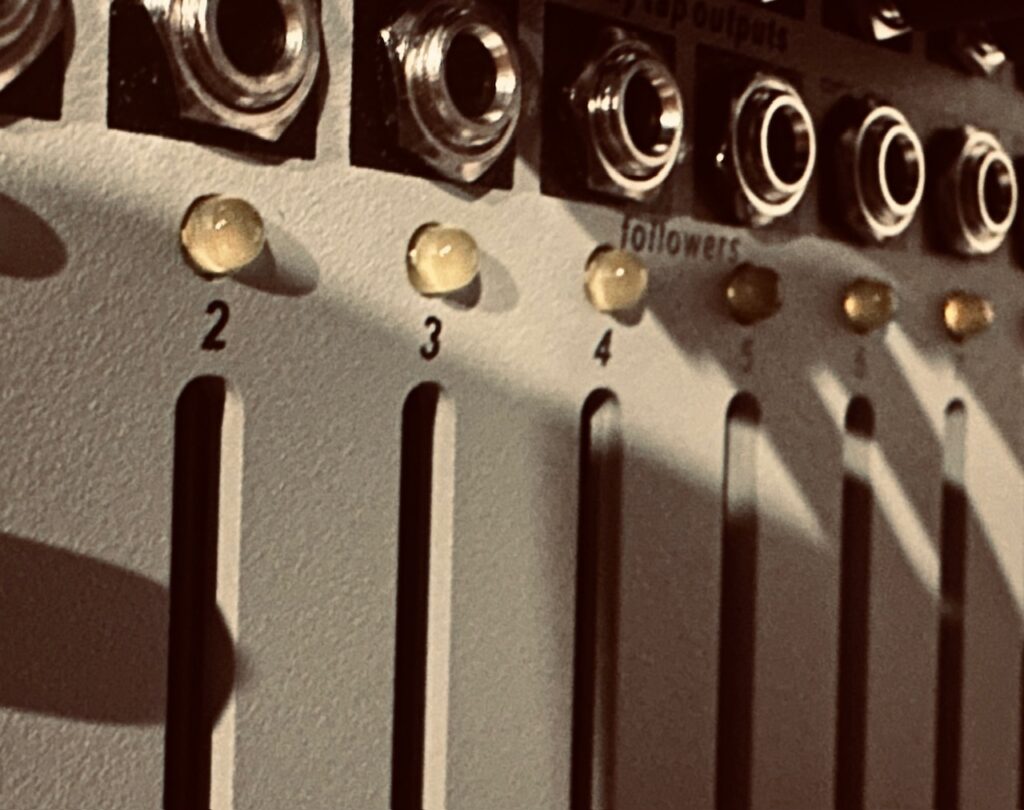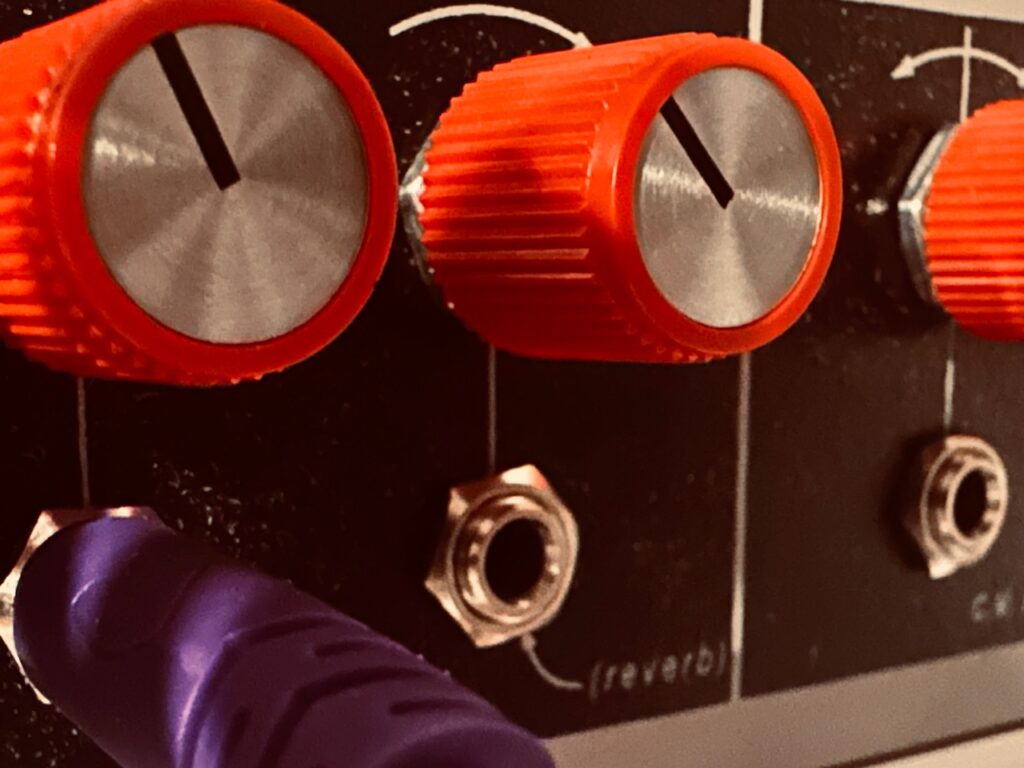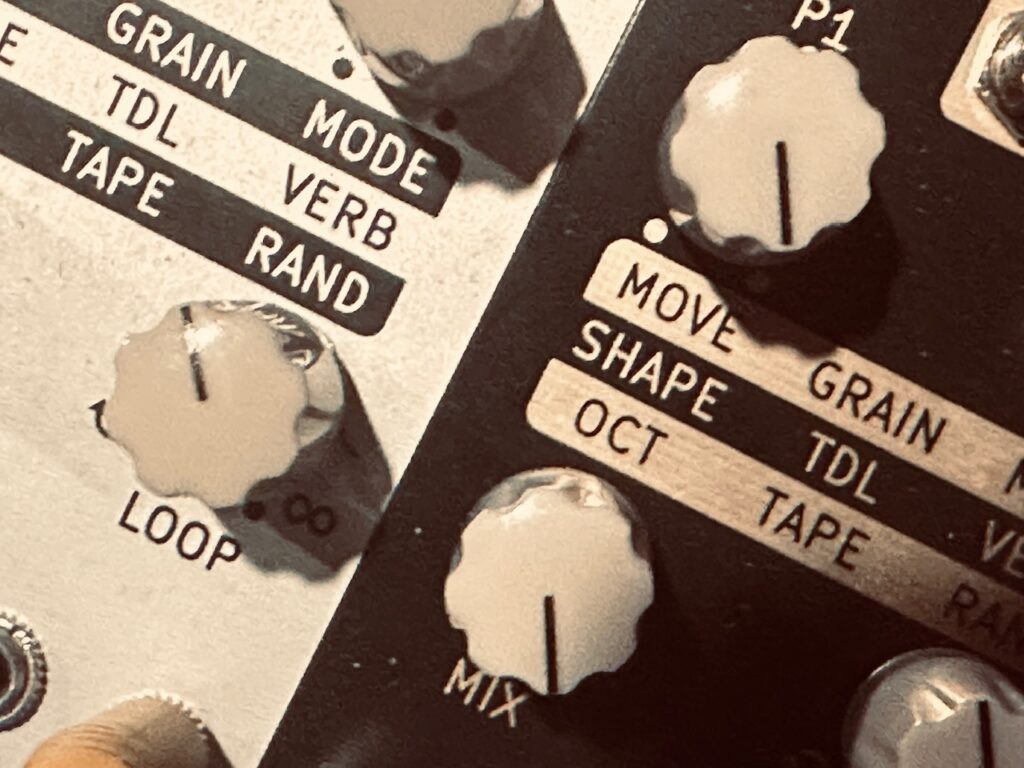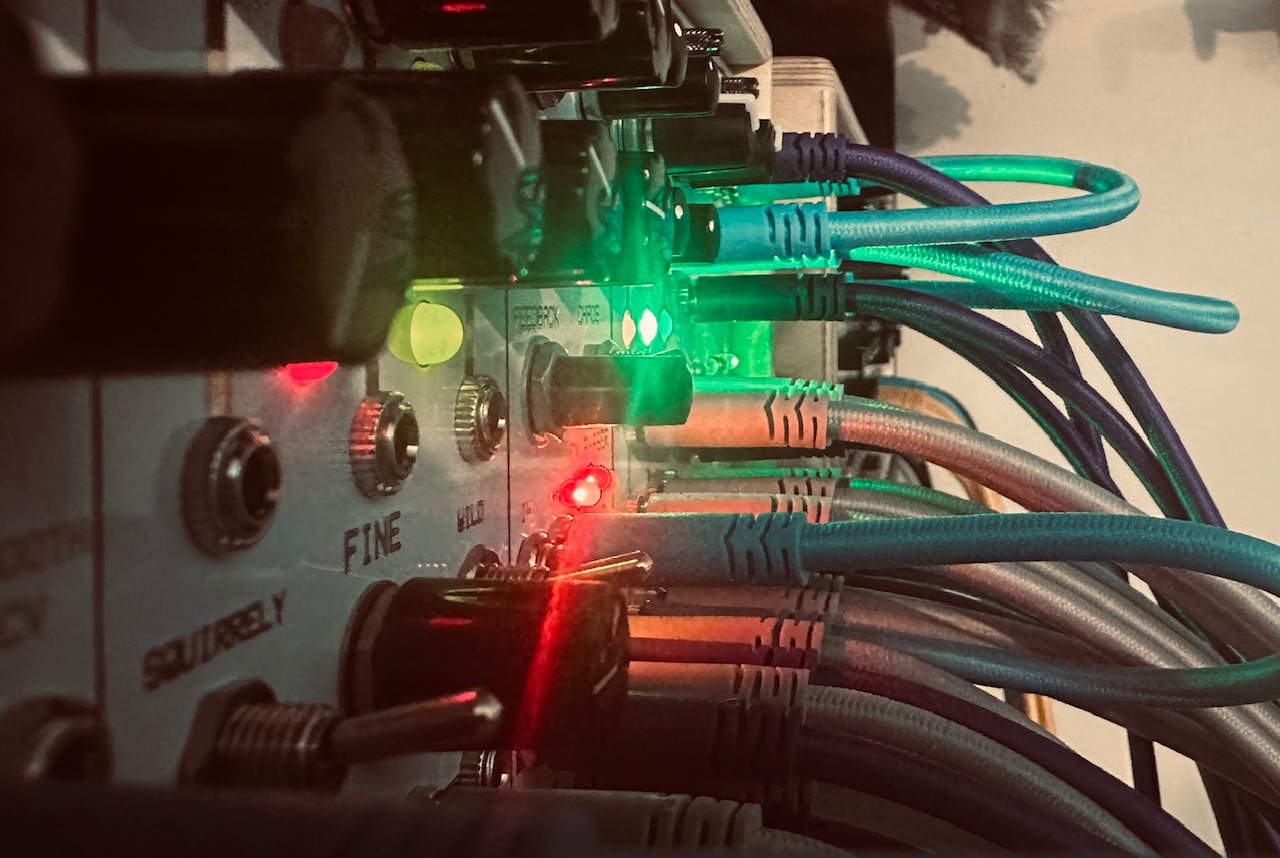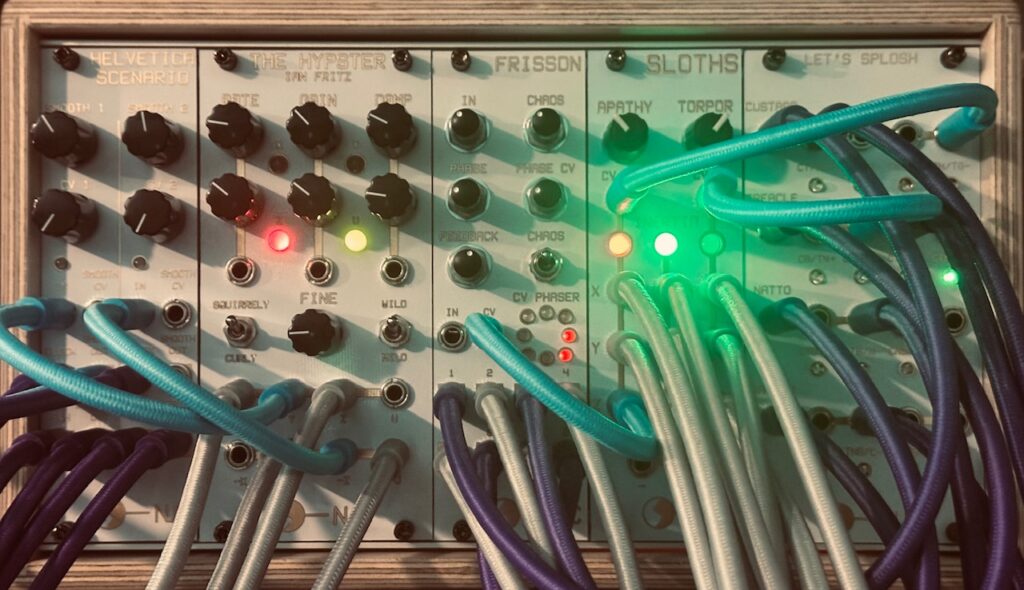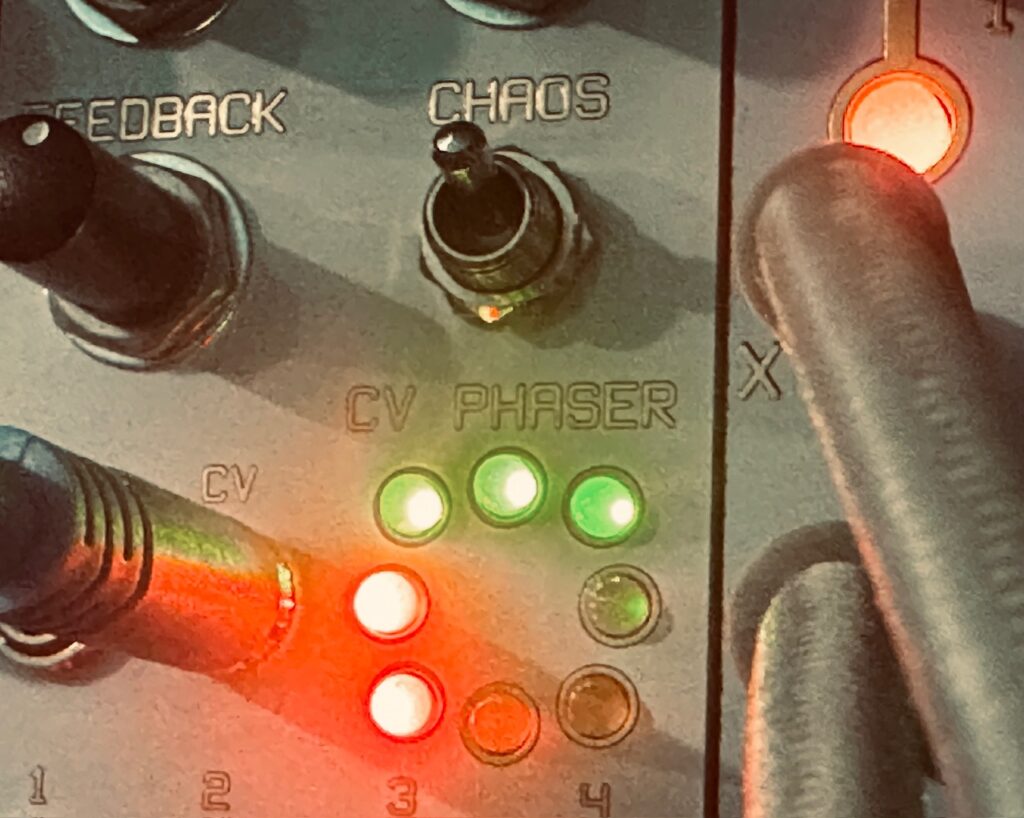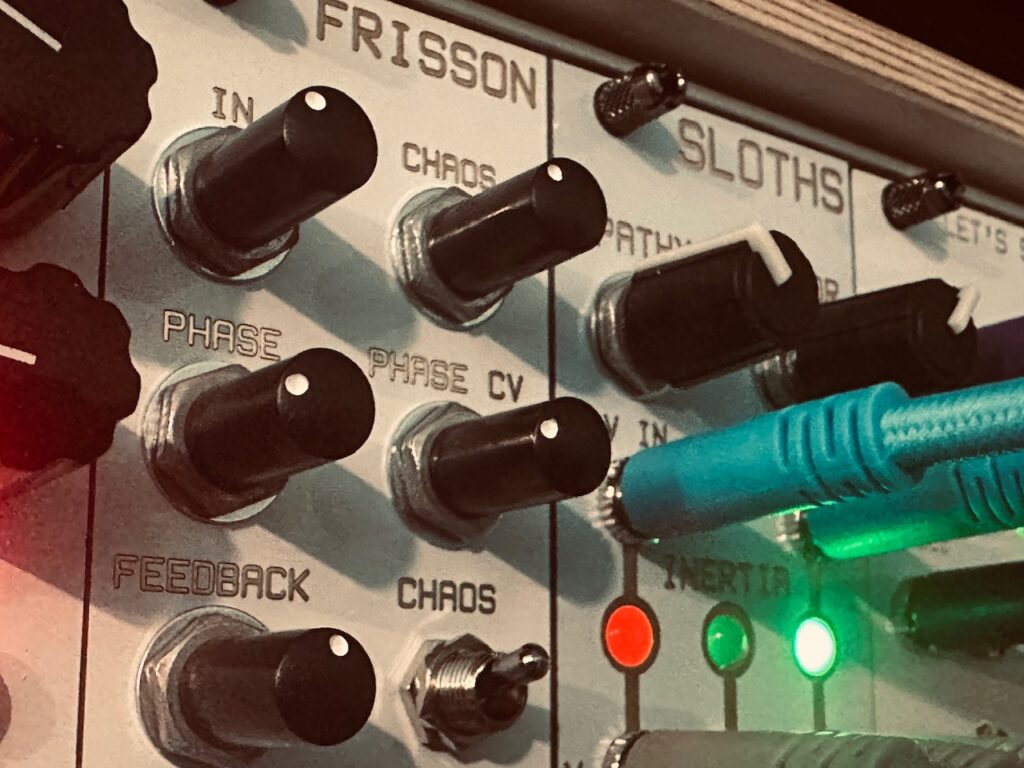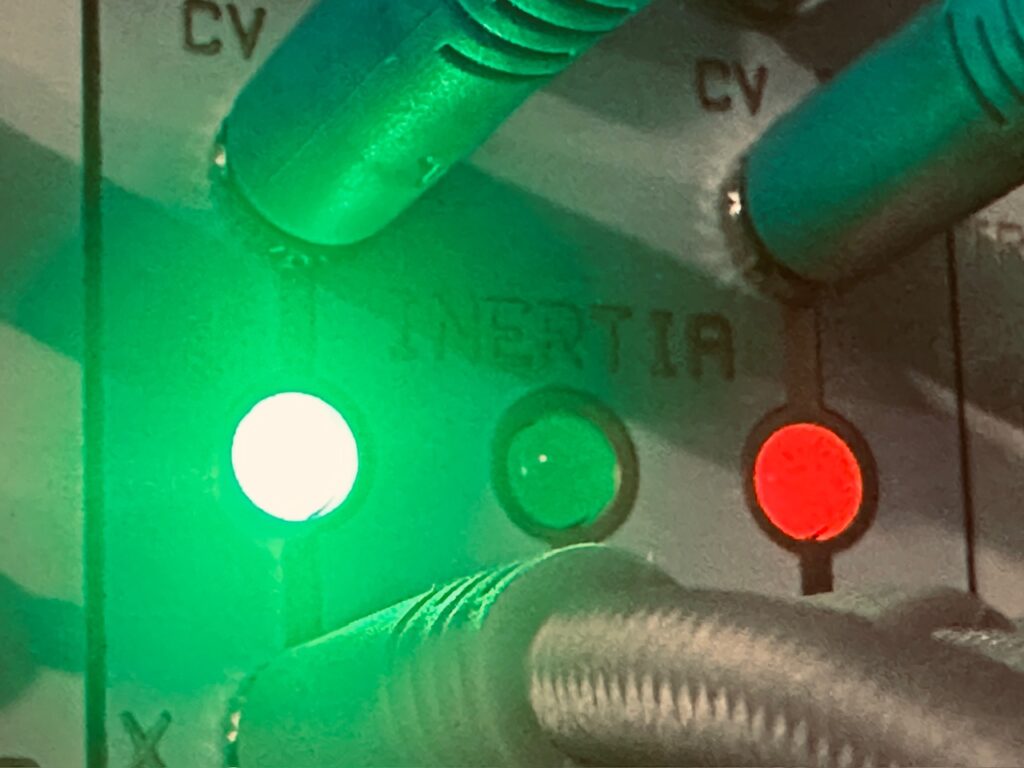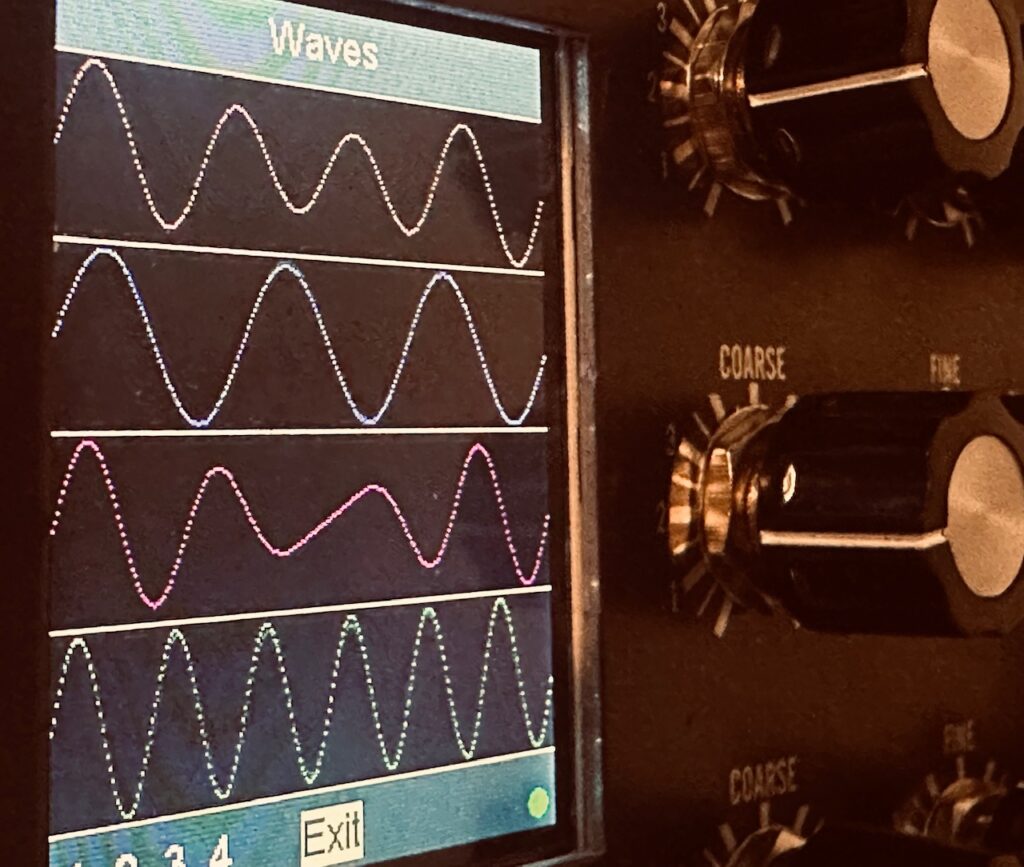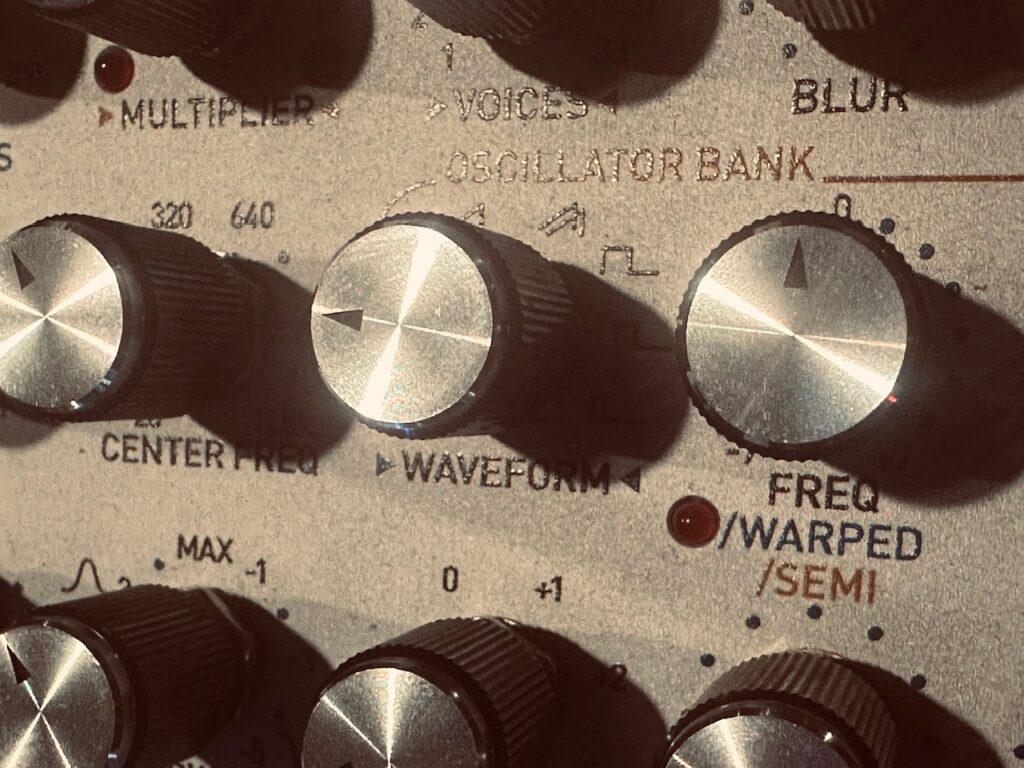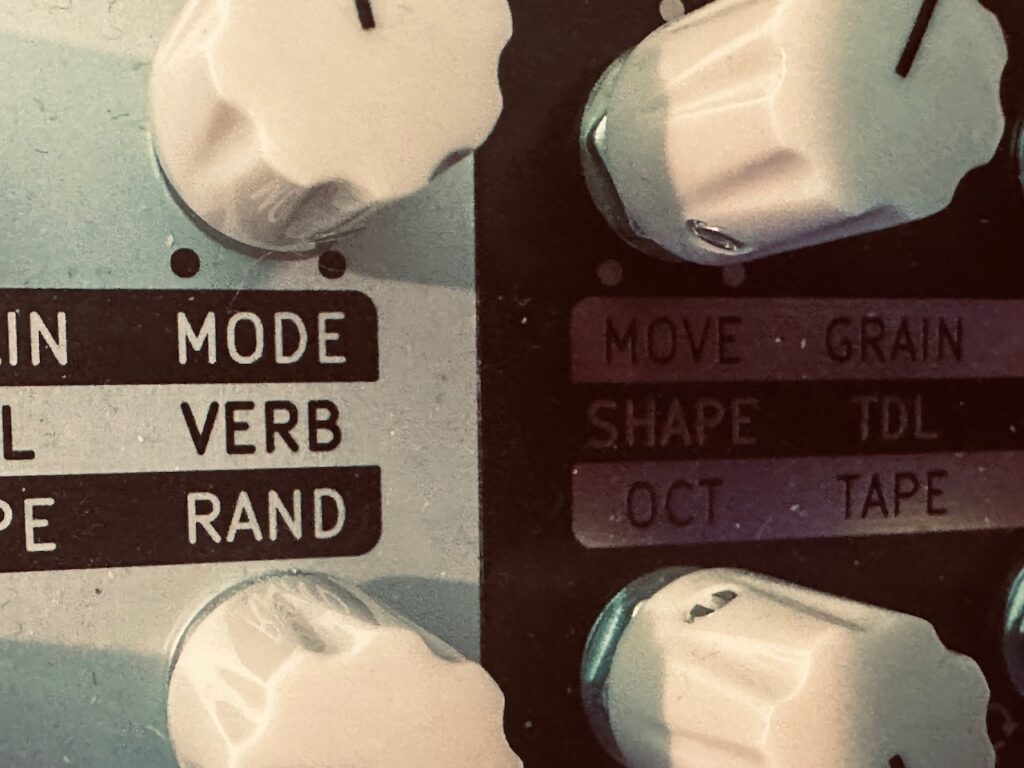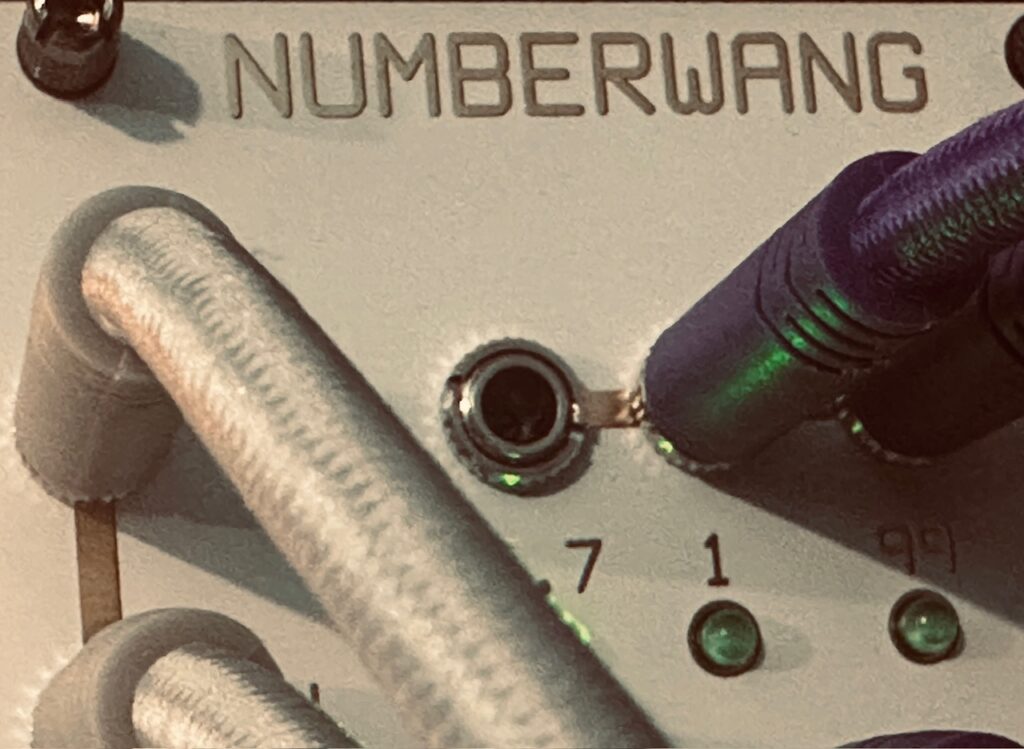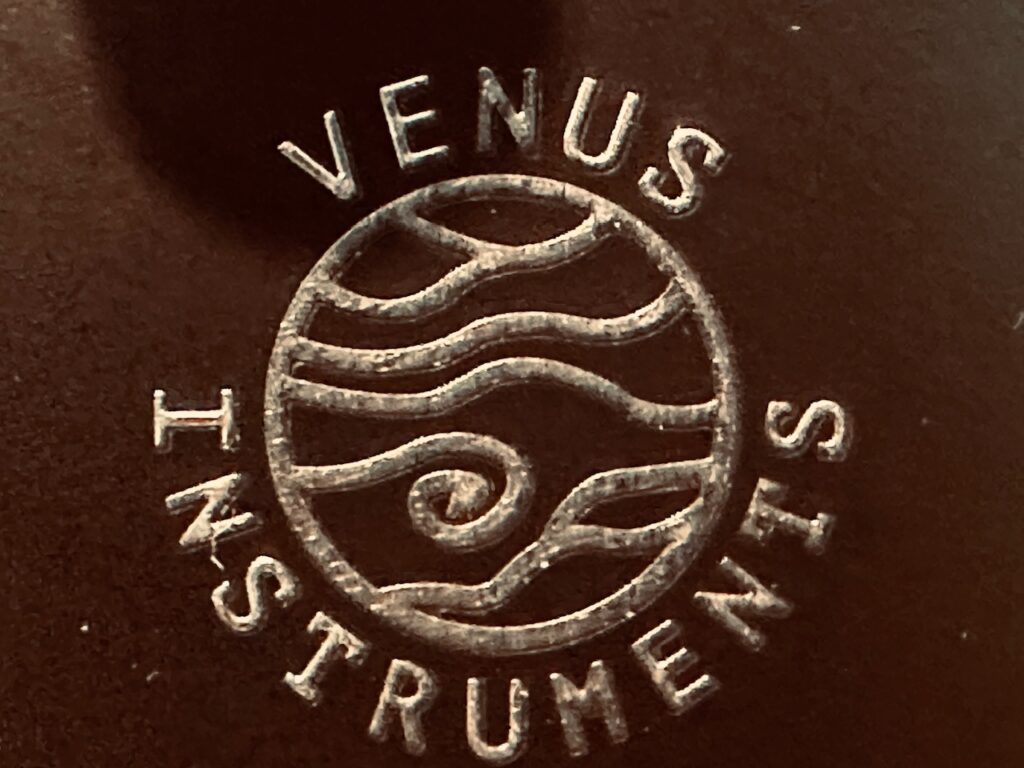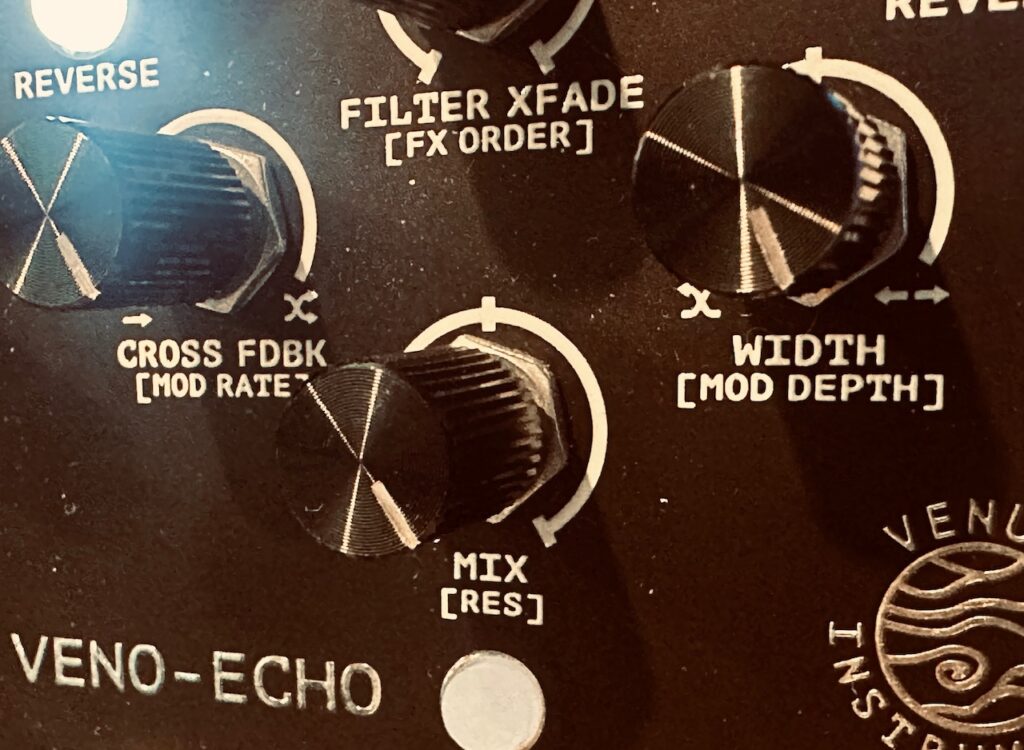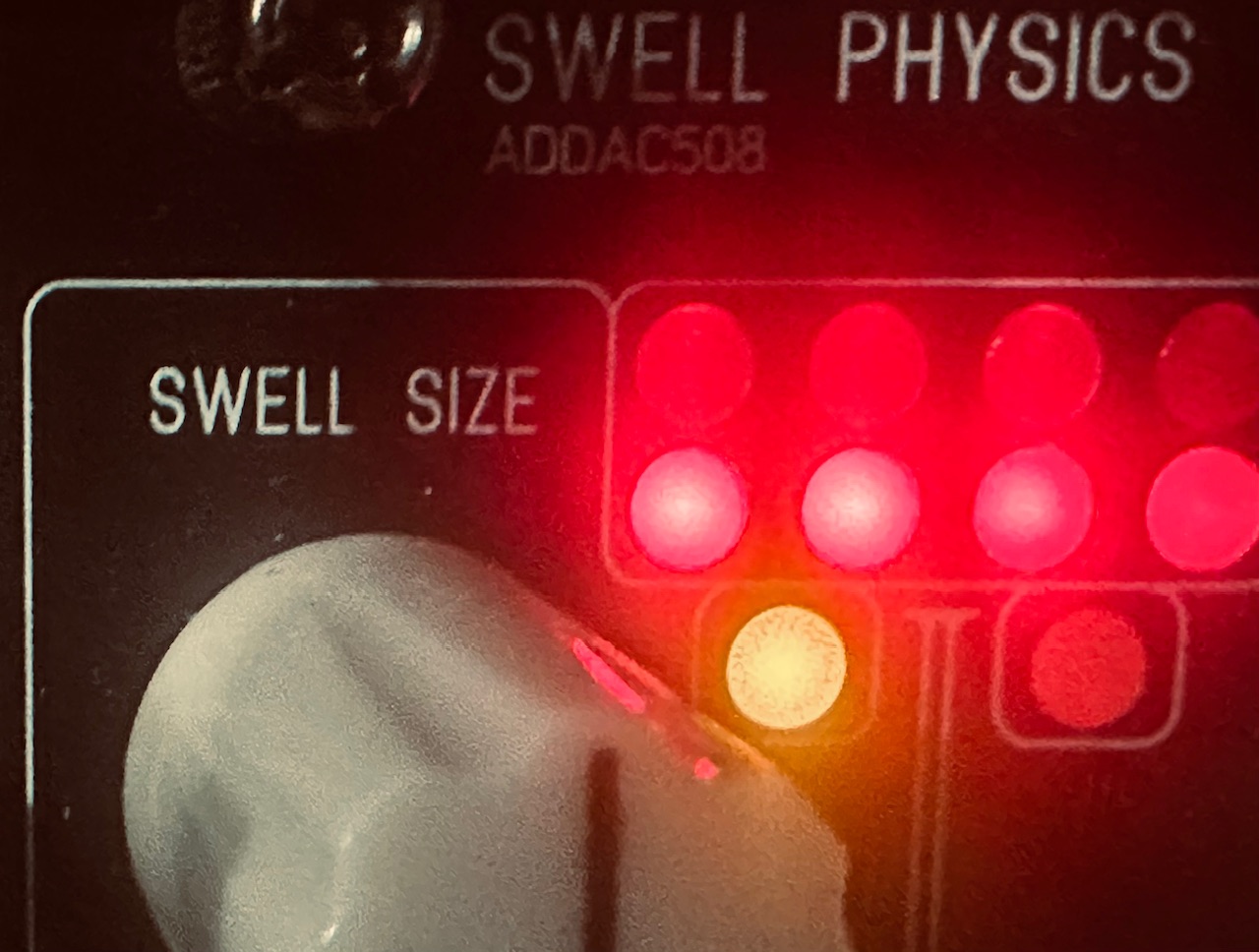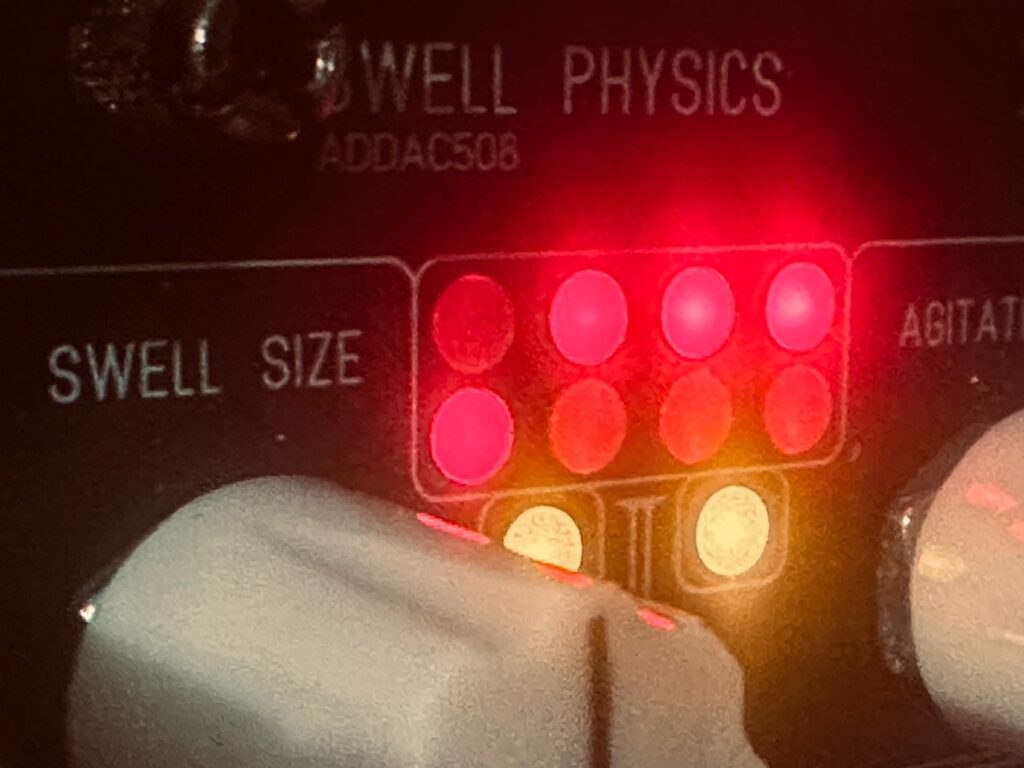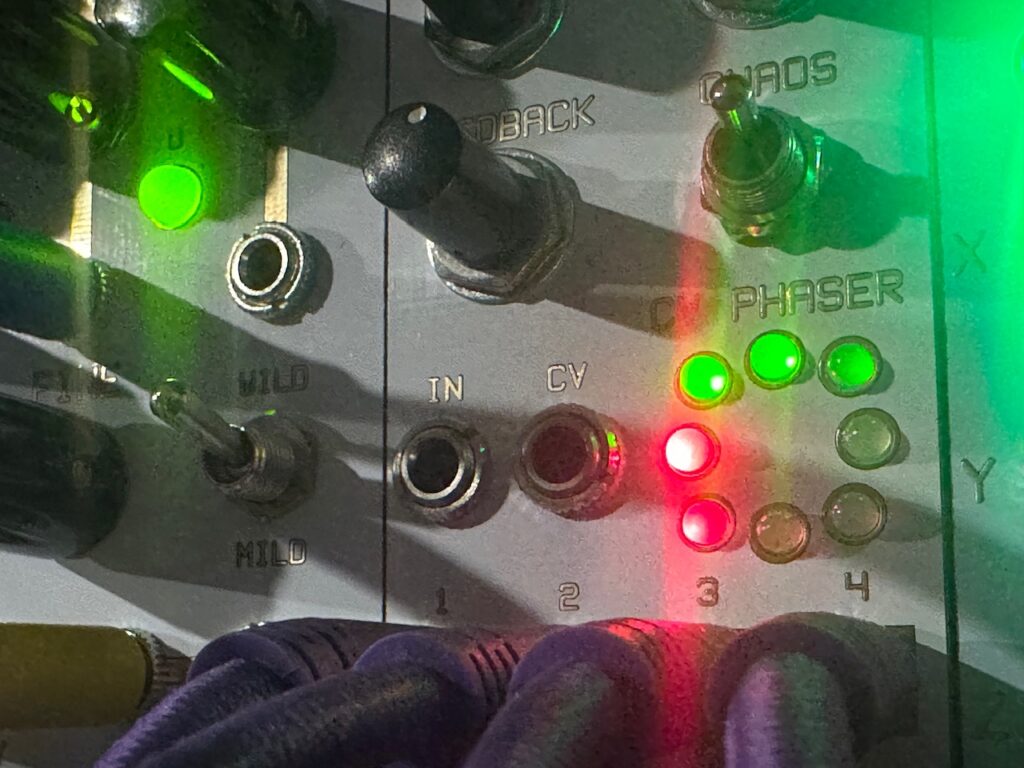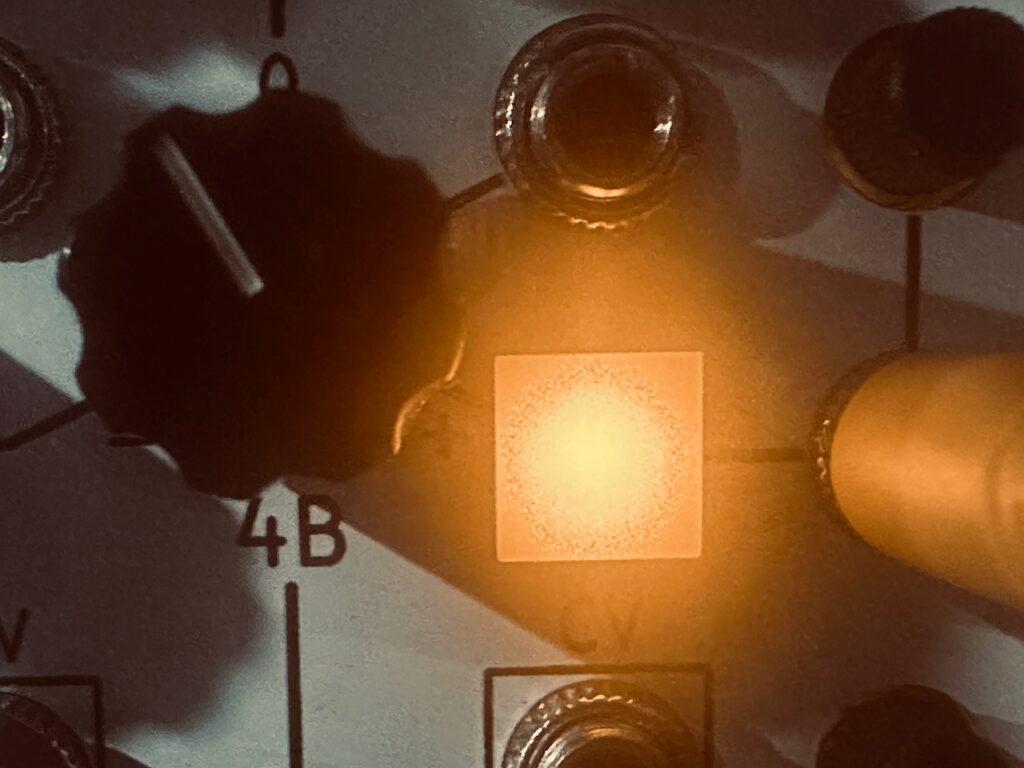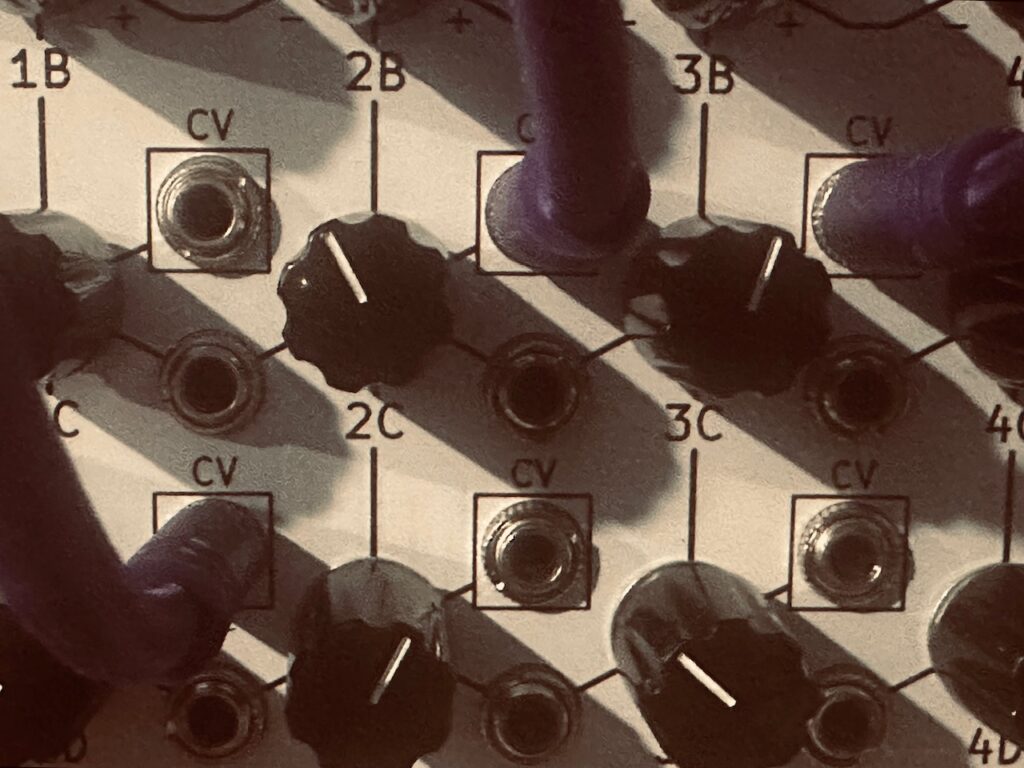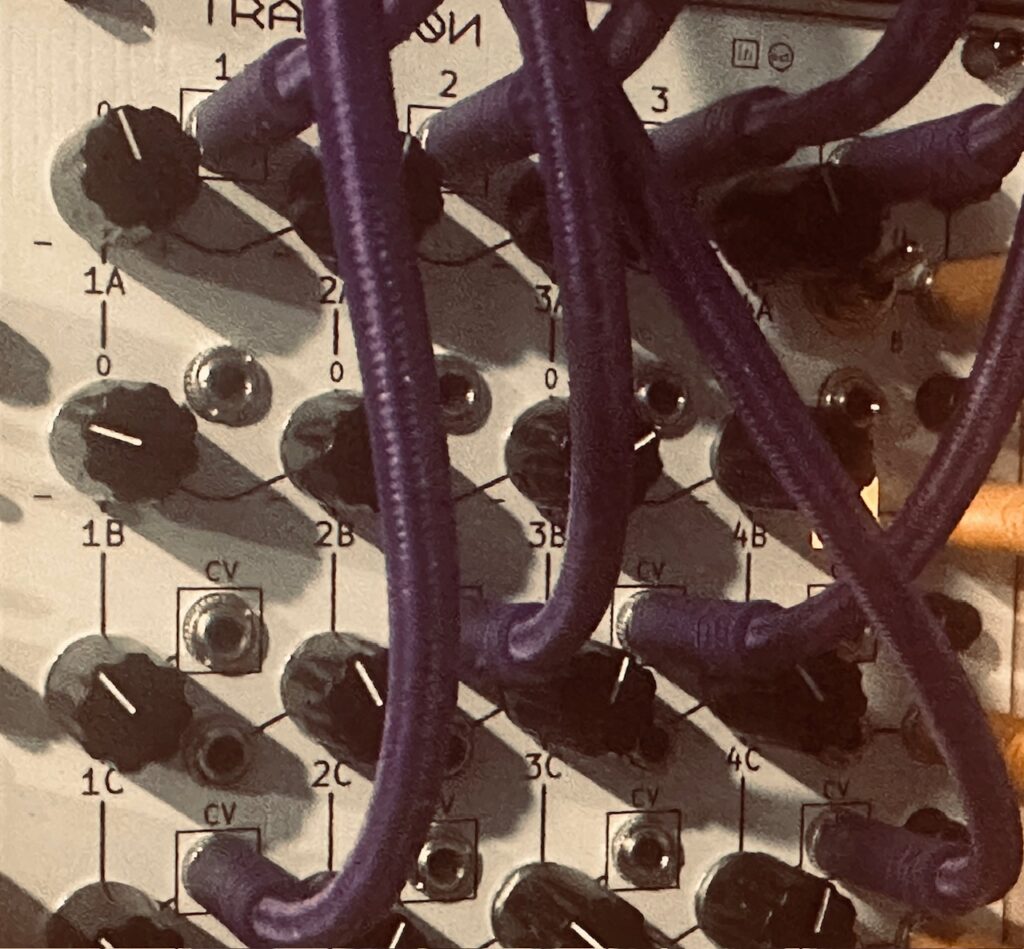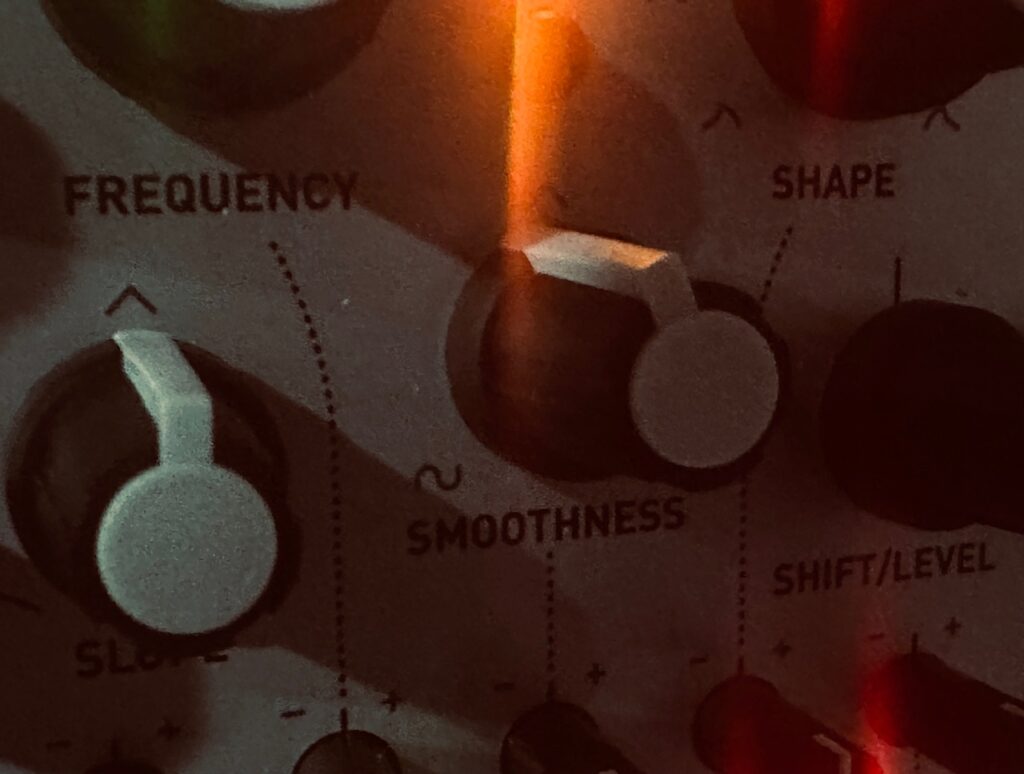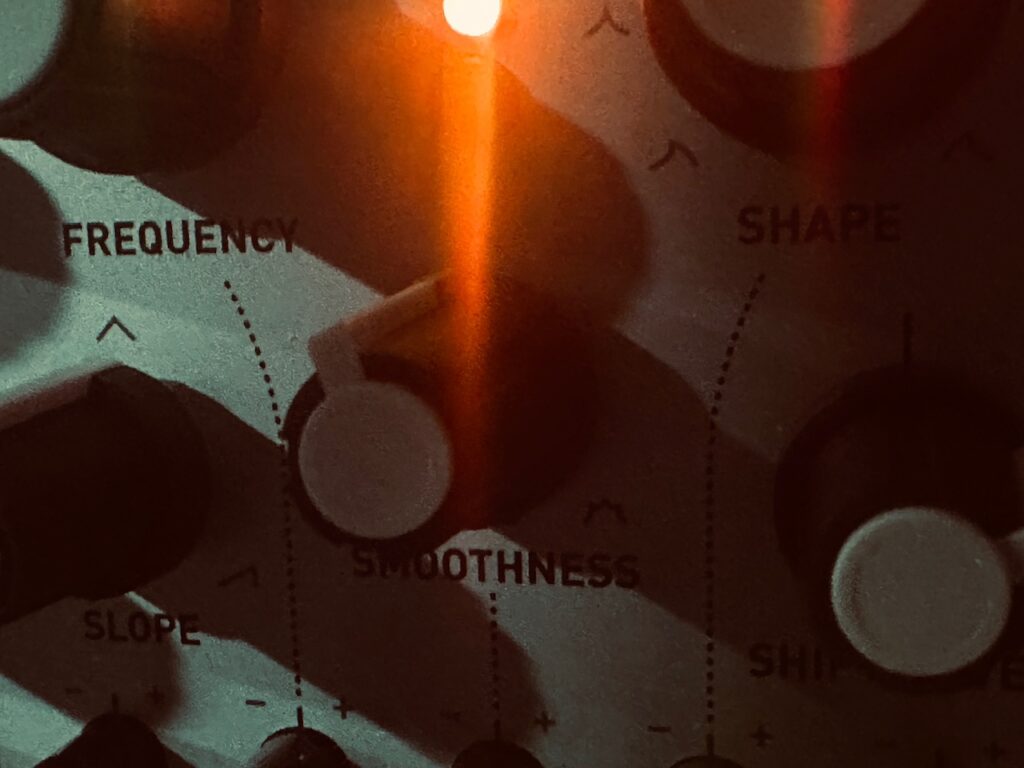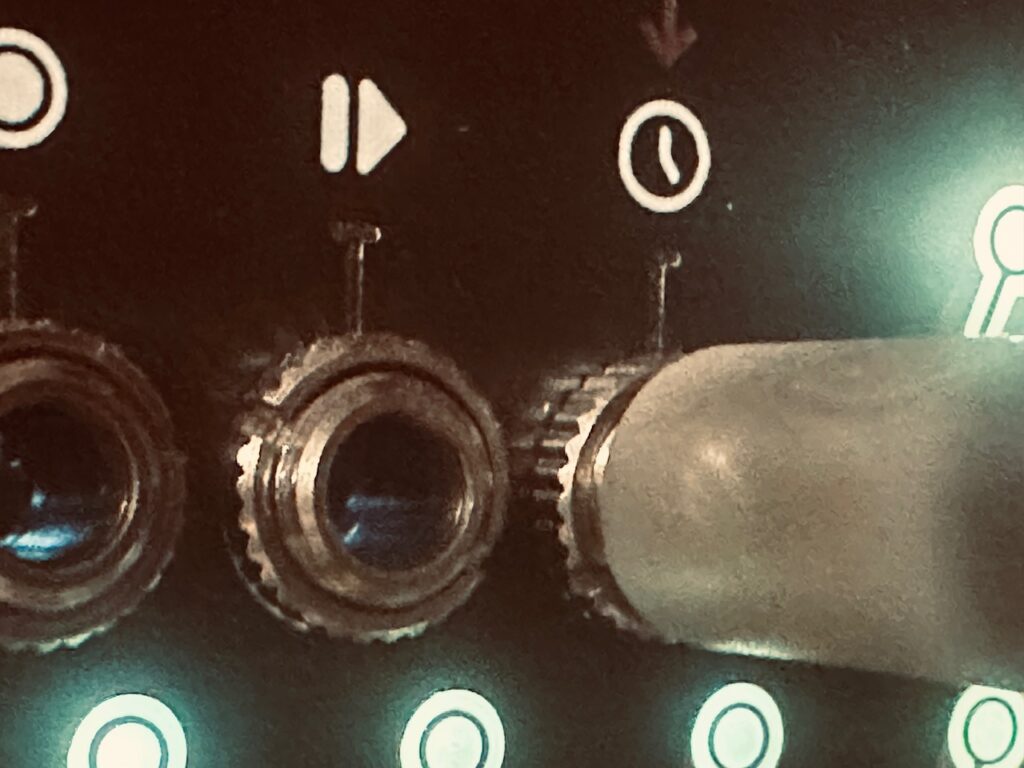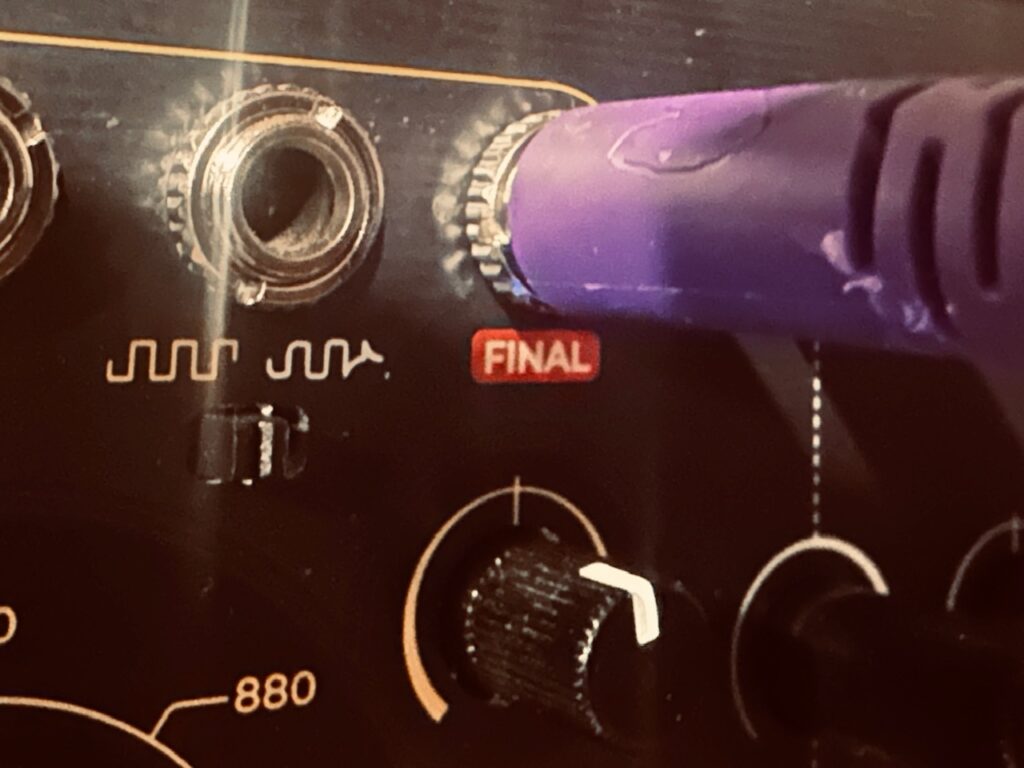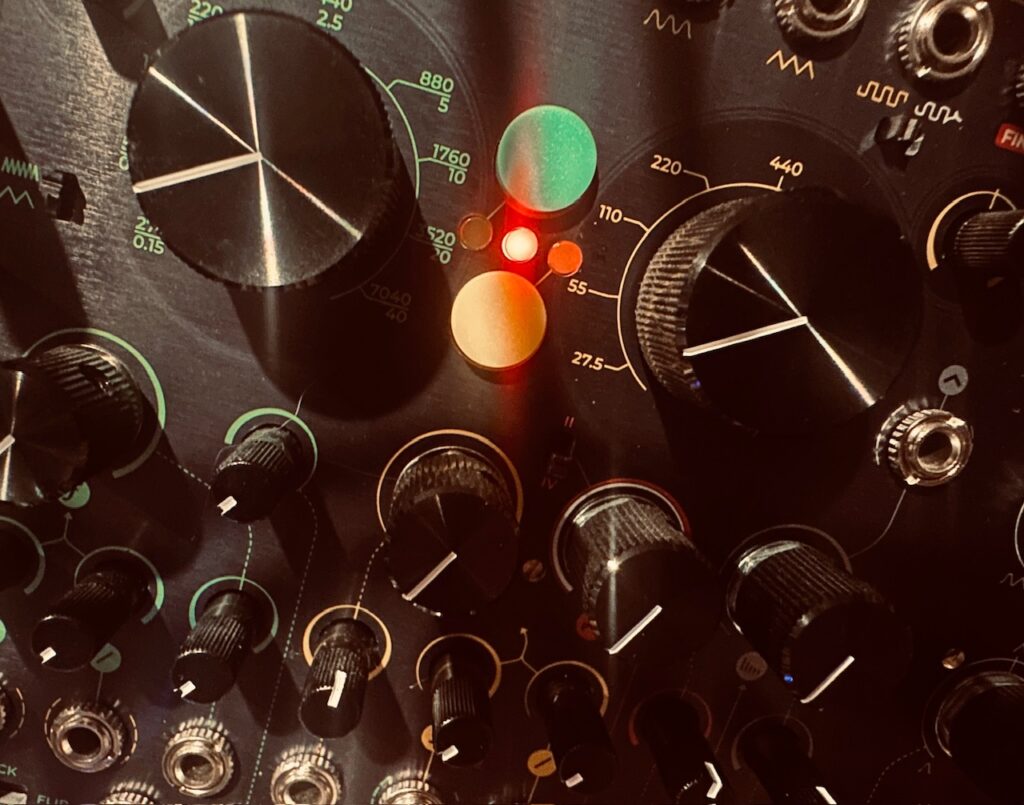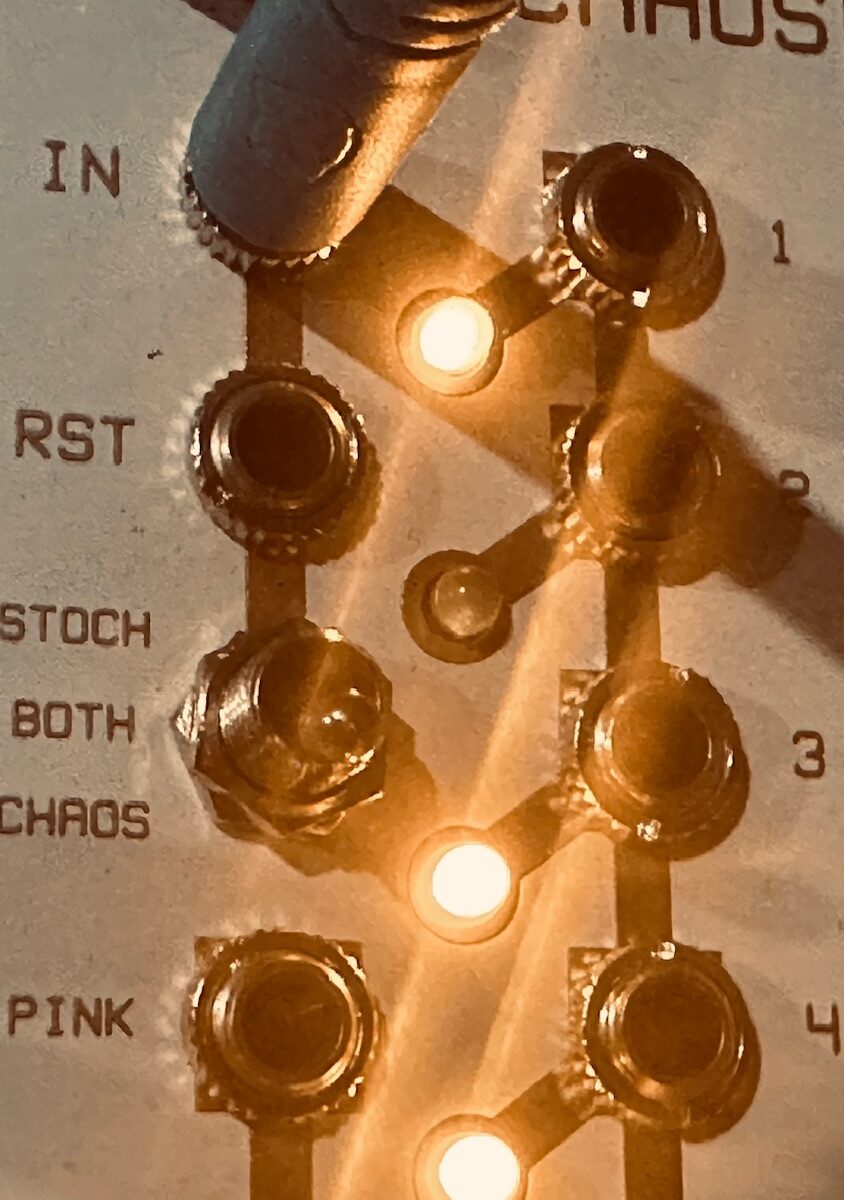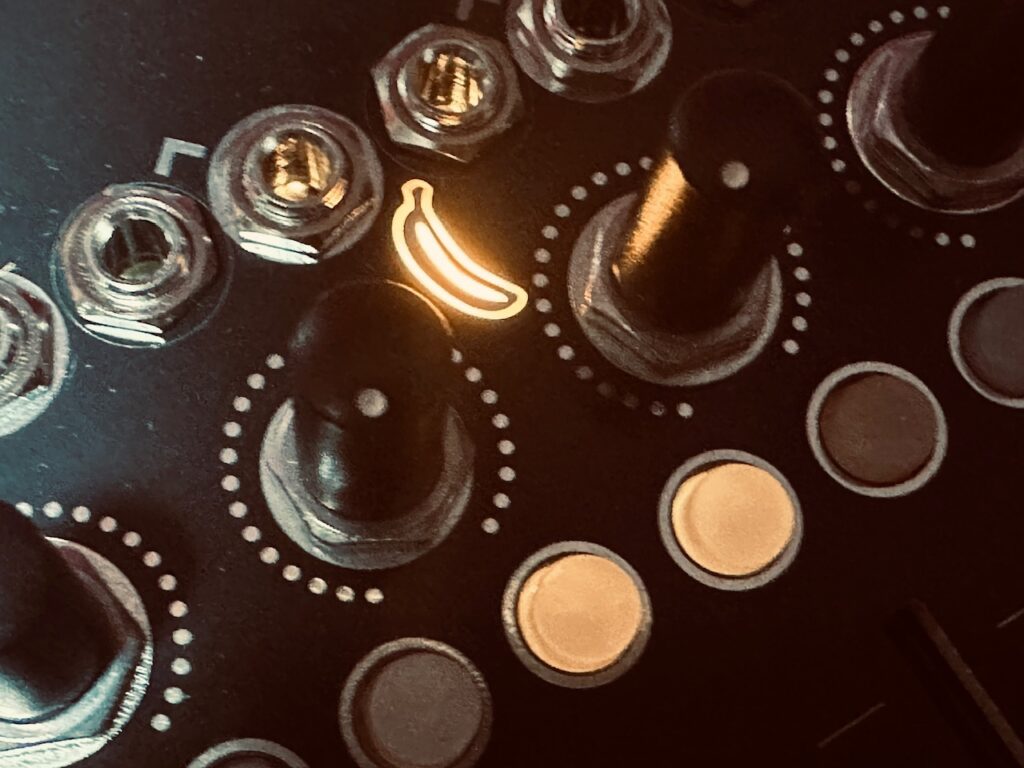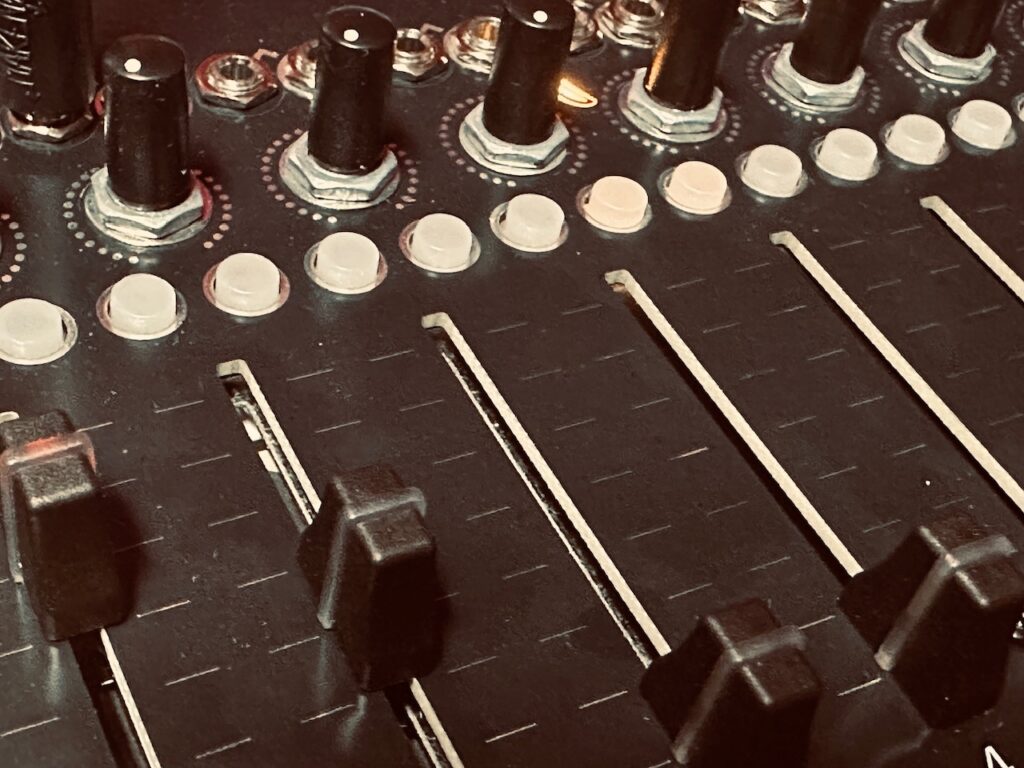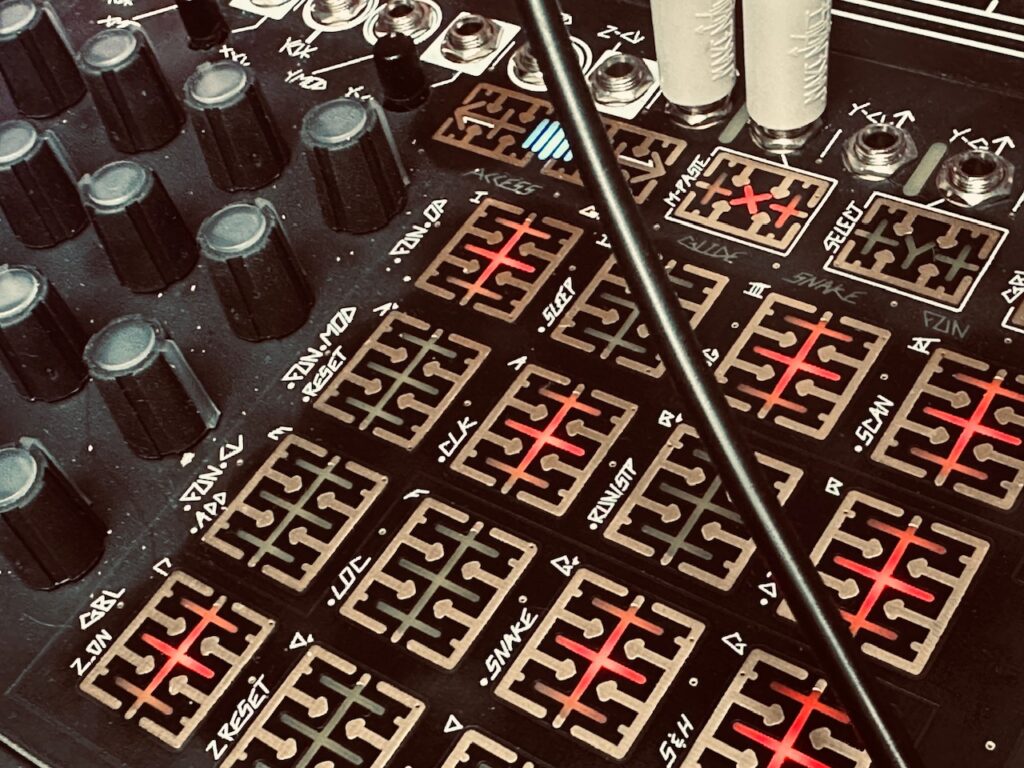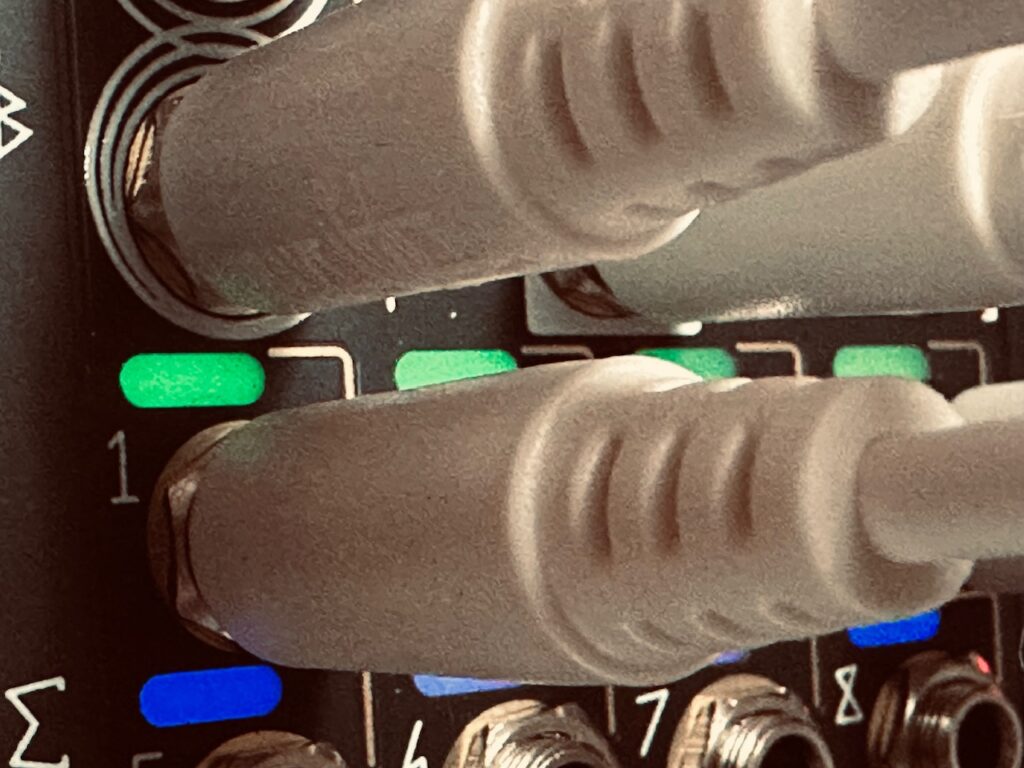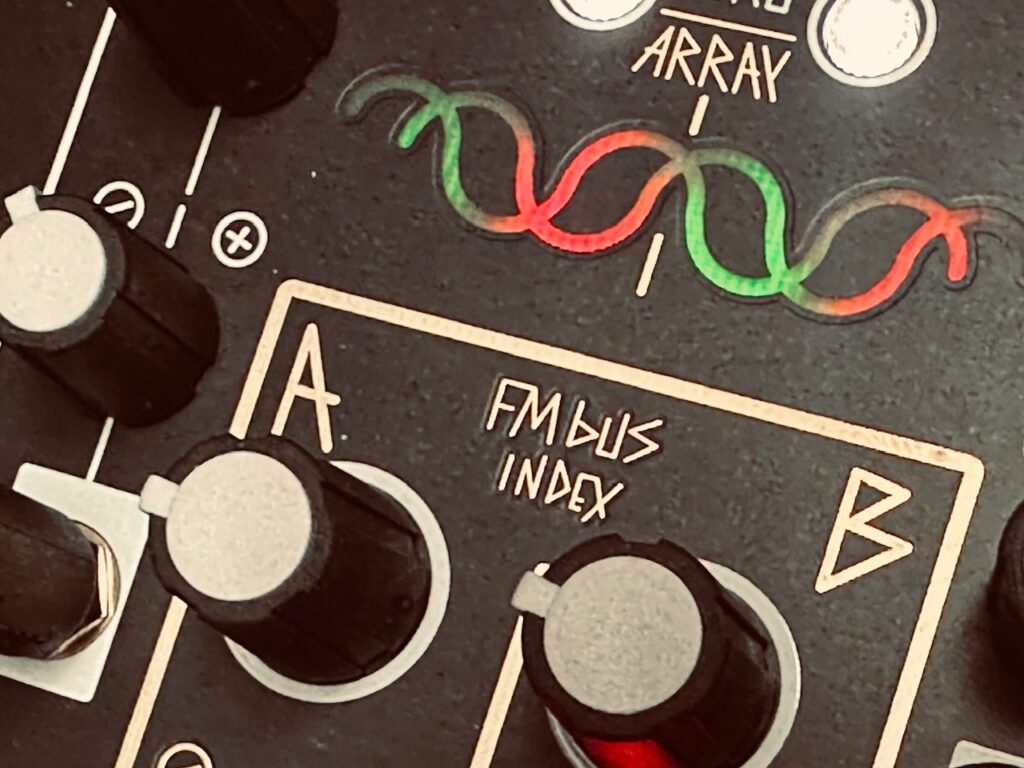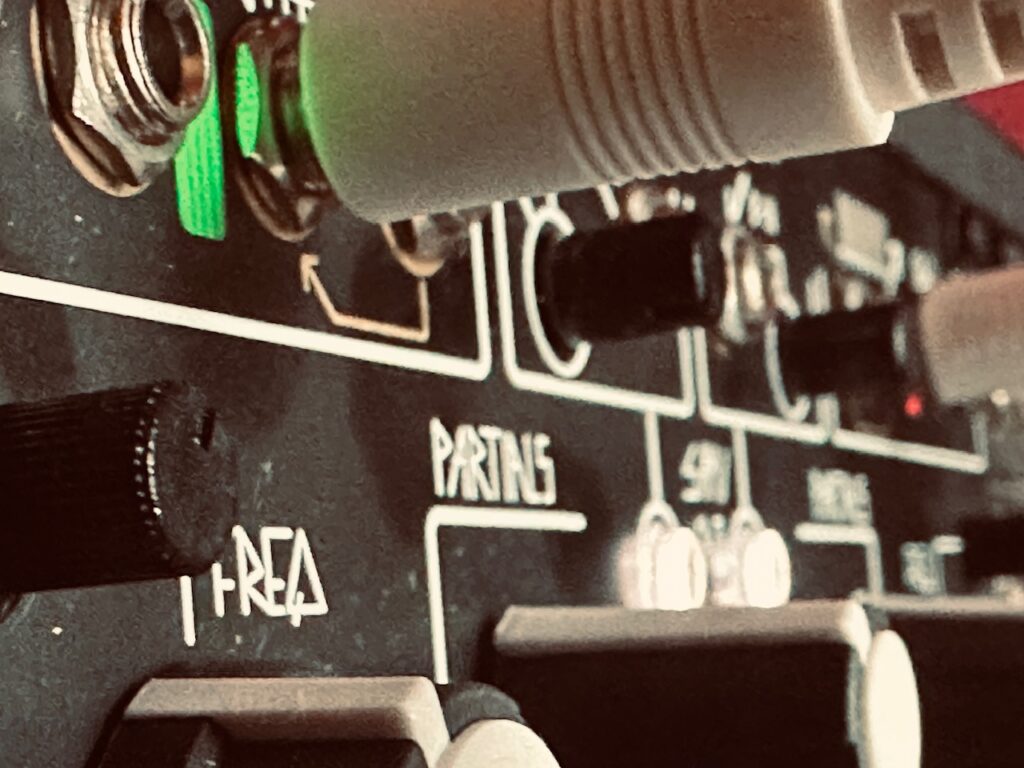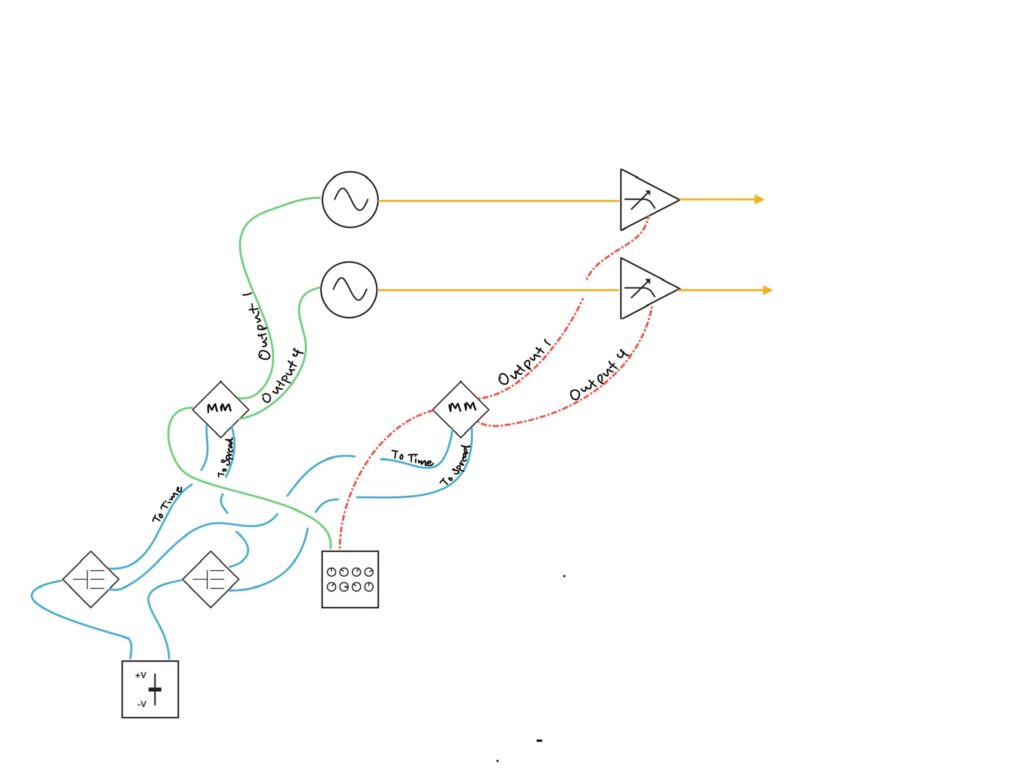It’s no secret that I like patching within brands as much as I can. I like the feel of a unified instrument that’s built to play in concert. It’s not always possible, but I often try and contain a patch within a case until I don’t have any more options. Sometimes it’s an added bit of modulation, or maybe some spare VCAs, or mixing, but I try an exhaust as many options as I can before venturing to another case.
I’ll be the first to admit that it’s been a while since I’ve patched my Instruō case. In fact, it’s criminally underused in comparison to many of my other cases. It hasn’t even been on the synthshelf for the last several months, opting instead to explore other instruments. But today I had a hankering to use it. It wasn’t one module or another that called out to me, but the whole package. I wanted to use Oct tōne.1 I wanted to use Lúbadh. I wanted to use Arbhar. And I wanted to use Scíon.
The Oct tōne, officially designed by Jason Lim at Instruō, and built by the Glasgow Synth Guild, is a wonderful little eight step sequencer that can be chained to support 16 steps. Though it’s small in size, just 10hp, there is a lot of functionality packed in. If it looks familiar, it should. Out of music school in Boston, Jason designed the Qu-Bit Electronix Octone, a sequence module discontinued many years ago, which is what the Oct tōne is based on. Though the basic idea is the same, a small eight step CV and gate sequencer, Oct tōne takes the idea to a new level, adding choice bits of functionality like ratchets, the ability to save and recall sequences, chain-ability for up to 16 step sequences, as well as duophonic output, and much more. In modern Instruō fashion, sometimes cryptic key combos and switch positions unveil a complex set of features that rival much larger sequencers, though I tend to avoid using most features hidden away behind them. Fortunately the most common features one generally might want to use are right on the face, allowing the ability to quantize to one of six scales,2 set the sequence length and direction, as well as various other parameters.
The patch starts with the End of Cycle trigger of an unmodulated, cycling function from Cnōc to serve as the clock. Although a large portion of Oct tōne’s user interface is taken up by the Rate knob which would ordinarily control the tempo, it doesn’t have a clock output, which makes syncing with other gear a bit more difficult. I could have used the trigger output as a clock, but that would have precluded removing steps from the sequence, even if I ultimately didn’t. I also wanted to gate the clock so that the sequence wasn’t running constantly, and without a clock output, I had to patch one to use as a master clock. I ran the clock output from Cnōc to a mult, then to both the Nonlinearcircuits Divide & Conquer as well as a VCA input so that I might gate the clock controlling the sequence with a /5 output, forcing continuous starts and stops as it made its rounds. The clock was also patched to the Venus Instruments Veno-Echo for delay synchronization.
Although I’ve had Oct tōne since it was initially released, I haven’t really used it much. I’m not very familiar with the hidden feature set at all, and I had to break out the manual for even simple adjustments, like changing scales and choosing a random pattern. None of these features are difficult to use by any means, but my unfamiliarity with the interface made the entire thing seem far more cryptic than it actually is. The sequence is simple. It’s a full 16 steps, in Minor Pentatonic, and with notes that sounded good together. The CV output was patched to the v/oct input on the venerable Tš-L, a compact oscillator with a full feature set from FM to PWM, and outputs with standard waves (square – with octave switch, sine, and triangle), to mind-blowingly good wavefolded and PWM outputs, all in just 6hp. Tš-L was the first oscillator I ever bought, and I’ve since bought a second, and I don’t see myself getting rid of it. It’s a powerhouse oscillator in a small package, and sounds great.

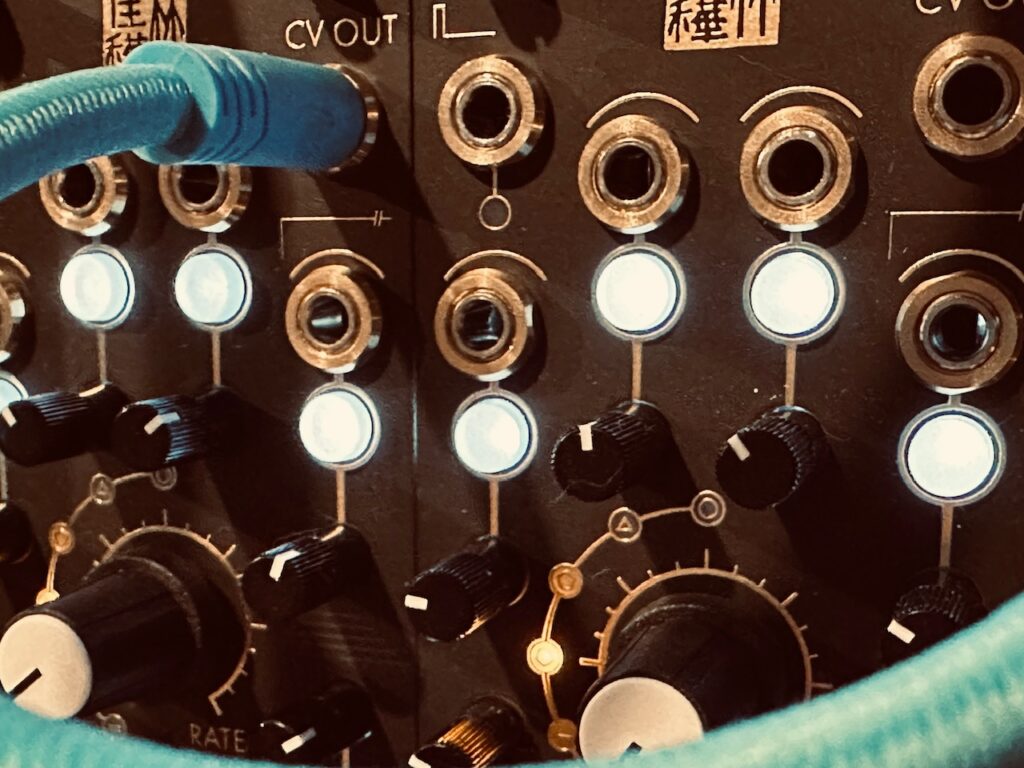
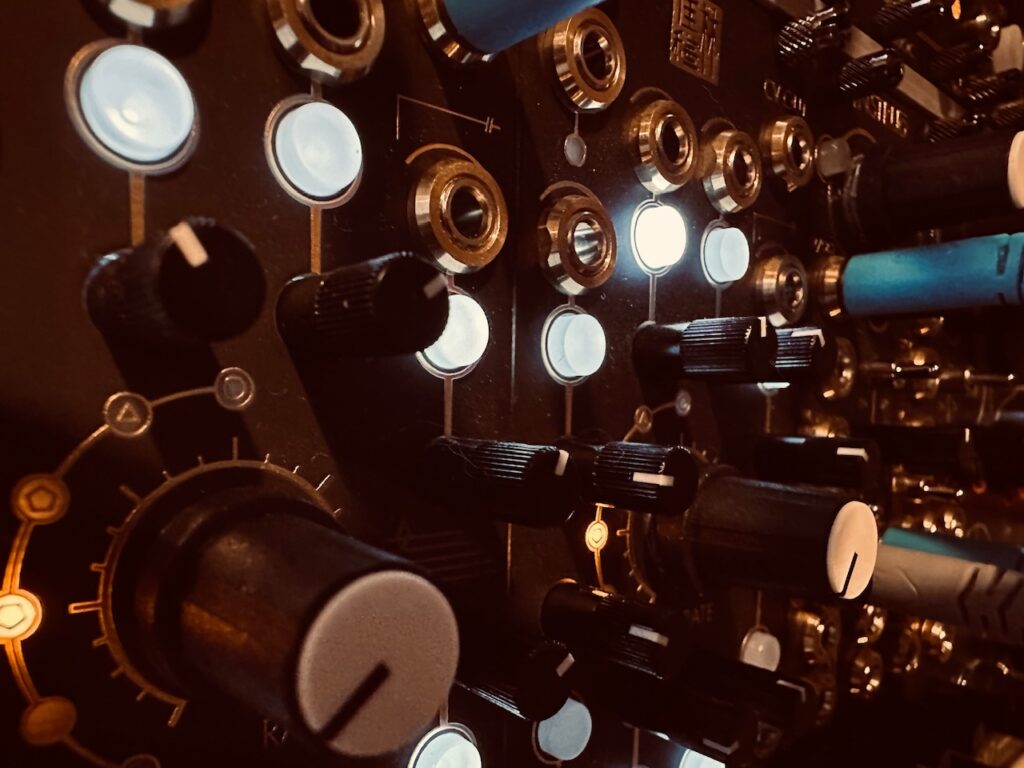
I mixed the sine output with a highly attenuated, LFO modulated, two-octave down sub output of the Tš-L in the venerable I-ō47 multimode filter based on the legendary ARP 1047, with a slowly moving LFO from Øchd modulating the cutoff frequency. My original intention was to try and tease out some filter wobble, but I’m pretty sure I had the level too high going into the filter (again), which masks any of the beautiful wobble that might be happening as the LFO moves the cutoff frequency of a highly resonant filter through a sine wave’s frequency. The I-ō47, like the ARP before it, is not your standard filter. Its resonance can scream, but in Notch mode, that high resonance can be highly useful when trying to pick out partials, or for filter pinging. I initially had the resonance set a shade too high. But once I dialed it down a bit, I was able to get just the right amount of frequency boost (with a shade of drive), without screaming. Nice.

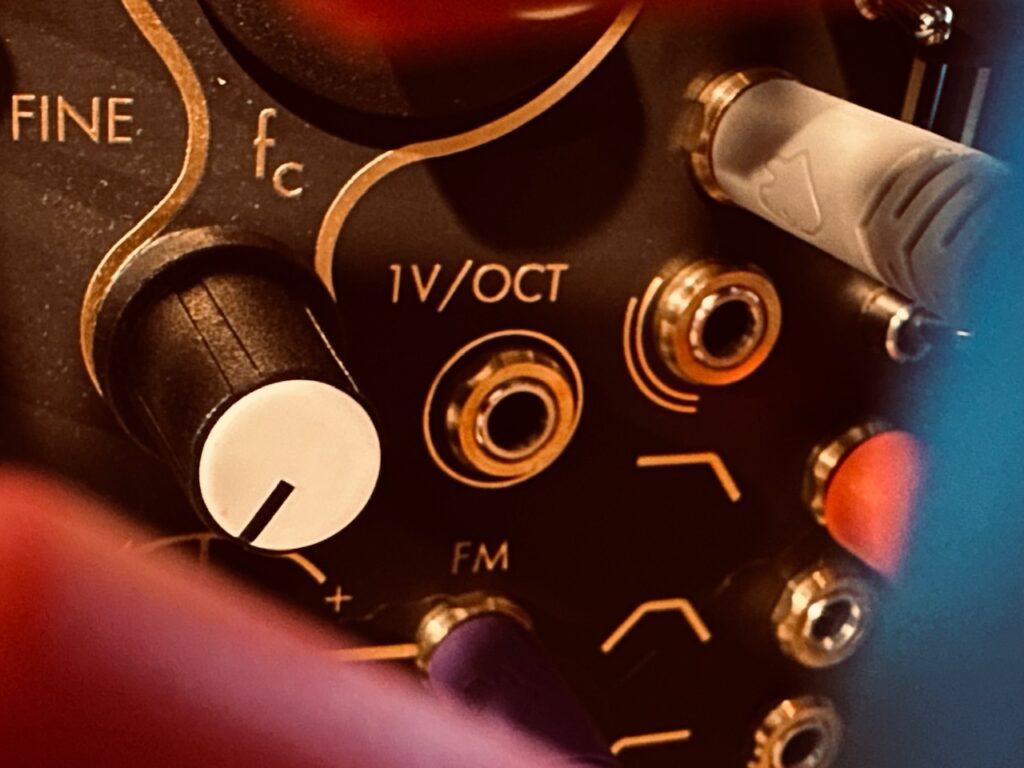
From the I-ō47, the mono signal was sent to several effects via the Addac814 6×6 Stereo Matrix Mixer. First to the wonderful Venus Instruments Veno-Echo for some synchronized delay, the left channel at 1x the clock speed, and the right side at a slightly slower division. I’ve long wanted an Instruo delay, and although the Lúbadh can be shoehorned into delay functionality, that’s not really what it is. Maybe one day we’ll see one. I had randomly generated gates from Scíon trigger reverse delays on and off, though it didn’t always have the effect I’d hoped for. Since the sound was completely un-gated, there weren’t many transients to work with, and reverse delays from a static tone (even if that’s not really what it is) don’t sound reversed at all. However, the delay created a beautiful atmosphere, with high-ish feedback for repeats that sometimes go on for a while until blending in with the reverb.
The output of the I-ō47 was also sent to Lúbadh for some looping action. Like most of the rest of this case, I haven’t used Lúbadh as much as I ought to; not since a couple of initial tests after the release of the 2.0 firmware (😬). But with my newly rediscovered interest in looping created by the Cutlasses Gloop, it was time to pull out Lúbadh to see what it can do. This patch was simple. I ran the audio from the I-ō47 output (via the Addac814) to both inputs and recorded the same section of audio to both decks. It wasn’t a particular part, but probably about 90 or so seconds worth of the sequence meandering, first forward, then randomly. Once I had a goodly snippet of the sequence recorded, I slowly moved the volume of the original input down, while moving the level of the Lúbadh up. From there I patched two of the slower Analogue Logic outputs from the Øchd Expander to Length, via some attenuation and offset in order to keep the signal in negative voltage territory, as well as choice bits of random CV from Scíon to Start of both decks. These modulations were unpredictable, and served to unsync the two decks beautifully, allowing them to move around in interesting ways, each playing different parts of the loop simultaneously. This movement created a wonderful phasing effect, as well as super-characterful bits of jitter as the playhead was shifted around. I very much enjoyed using Lúbadh in this patch, every bit as much as Gloop, even if next time I might wait to introduce modulation until after I’ve played around with the loop manually for a bit, or else end it sooner and manually adjust the start points and loop lengths, before allowing it to fade out. Manually manipulating the parts of the recording to be played is a great part of the fun.
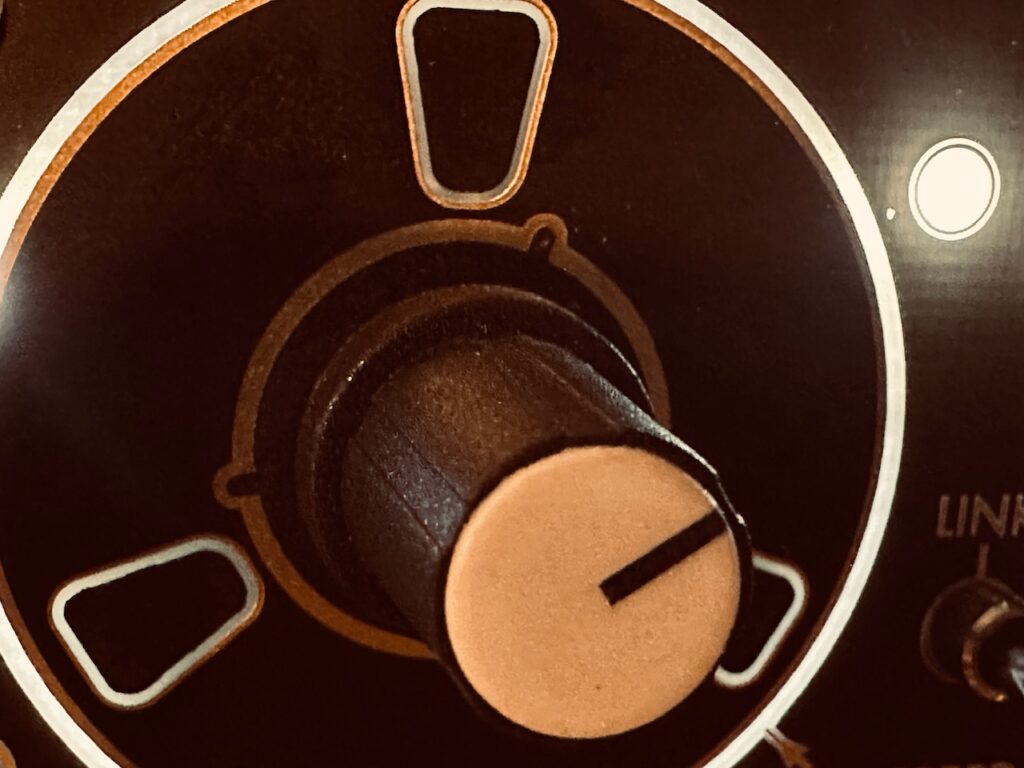
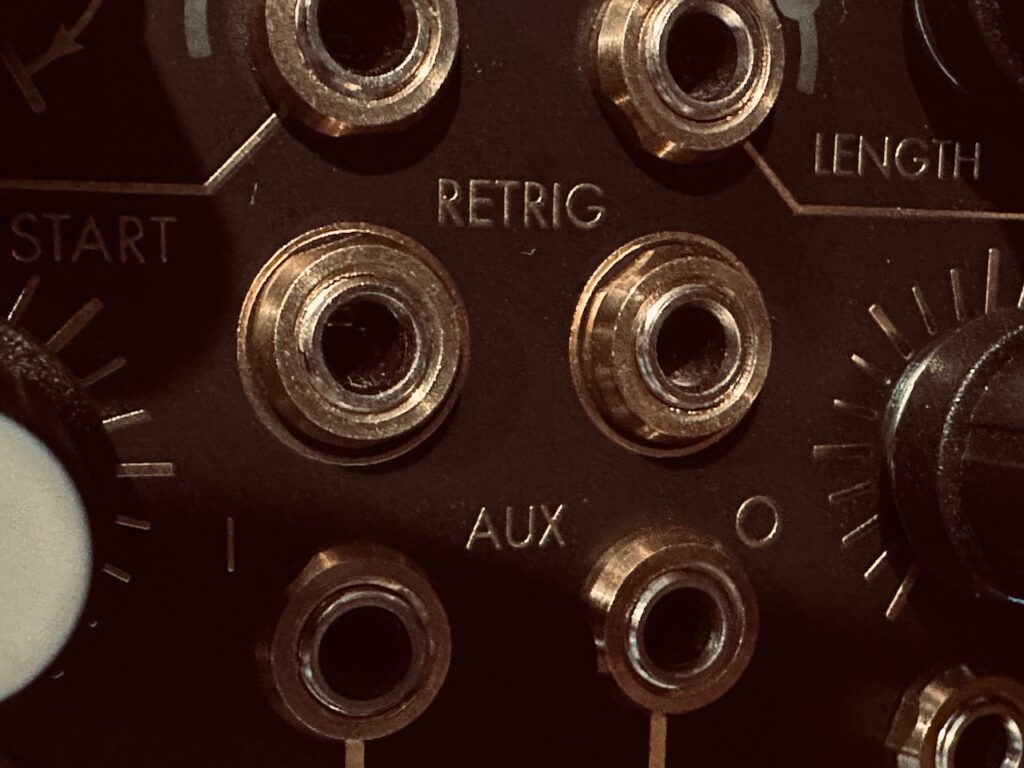
But I didn’t stop at Lúbadh. If it doesn’t have Arbhar, is it really even an Instruō patch? I’ve had Arbhar a long time. It was the module that pulled me in to this rabbit hole called Eurorack, and was my first large modular purchase after getting a few nuts and bolts for a system. I initially used it with guitar, creating floating and shifting chords composed of single notes played into each buffer. I really enjoyed that sort of playing, but I haven’t done it in a while, and the several other granular processors I’ve procured since Arbhar have meant my time with it hasn’t been as much as it should have been of late.3 I love granular processing, and use some form of it in almost every patch. But, generally speaking, I get much more mileage from “real-time” granular processors, like Beads and the Dradd(s), than from those that rely on pre-recording audio to a buffer,4 and so just haven’t used as much of the latter. All that said, Arbhar seems to have an ability that few other granular processors possess, even if I can’t quite describe what that it.
Although Arbhar is capable of recording audio to six separate buffers, while morphing between them creating granular clouds that aren’t possible with other granular samplers, I opted in this patch to use just one. At some random point as the sequence meandered along, I hit the Capture button and recorded a 10 second sample onto the Alpha buffer. Using an LFO from Øchd I scanned the buffer, while also using the remaining two outputs from Scíon to modulate Intensity and Length, changing the total distribution of grains as well as the size of each of them. I also used the single output of the now-replaced Tágh to modulate Spray. Tágh is a tradional Sample and Hold module that, while stunningly beautiful, is incredibly large, requiring a whopping 14hp for one random output, and one noise output. It’s completely impractical, and was replaced by a much smaller and far more capable version over two years ago, but I’ve resisted the urge to upgrade.5 Unlike most S&H modules, the OG Tágh does have some control for range, polarity, slew, and it even has its own clock.
As the piece progressed I introduced Arbhar as an octave up spray of sound, using square envelopes so that each grain was distinct. More sparkle and less diffusion. Because some of the grains produced by Arbhar in this patch were in what I lovingly refer to as “dog range”, I ran the output through the Xaoc Devices Zagrzeb, a stereo low pass filter, to tame down the highest frequencies, while adding some resonance and glitter to the patch. That makes me also want Instruo to come up,with their own stereo filter too.
Scíon is an interesting modulator. It’s also one of the most beautiful modules in all of Eurorack (which could also be said about both Arbhar and Lúbadh). Scíon is designed to use the bits of electricity produced by all living things as a source from which to derive random CV and gate signals. Stereotypically, one would use a set of Tens pads on a plant in order to derive those electrical impulses, but it works just as well with any living organism, or even just noise, which is what I used in lieu of sticking the pads to myself or lugging a houseplant up to the synth. It’s a novel way to use the world around us as part of a composition, with each performance destined to be unique. I haven’t really used Scíon much at all, generally preferring chaos to pure random, but I’ll be sure to use more of it in the future. It has four separate modes, Quantized, Random, Harmonic Overtone, and Clocked (which functions like a traditional sample and hold), which all produce fun results. For this patch I used the Quantized mode, though because all of the CV was used for modulation, and not for deriving pitch, either Quantized or Random modes would have worked.
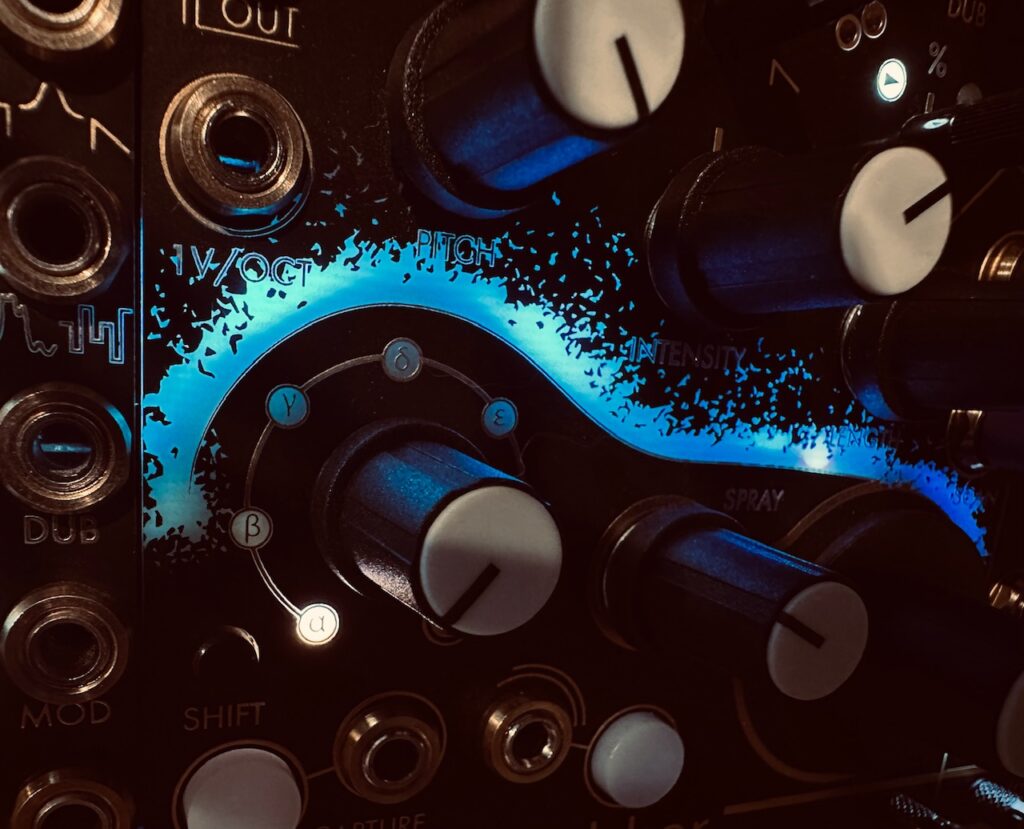
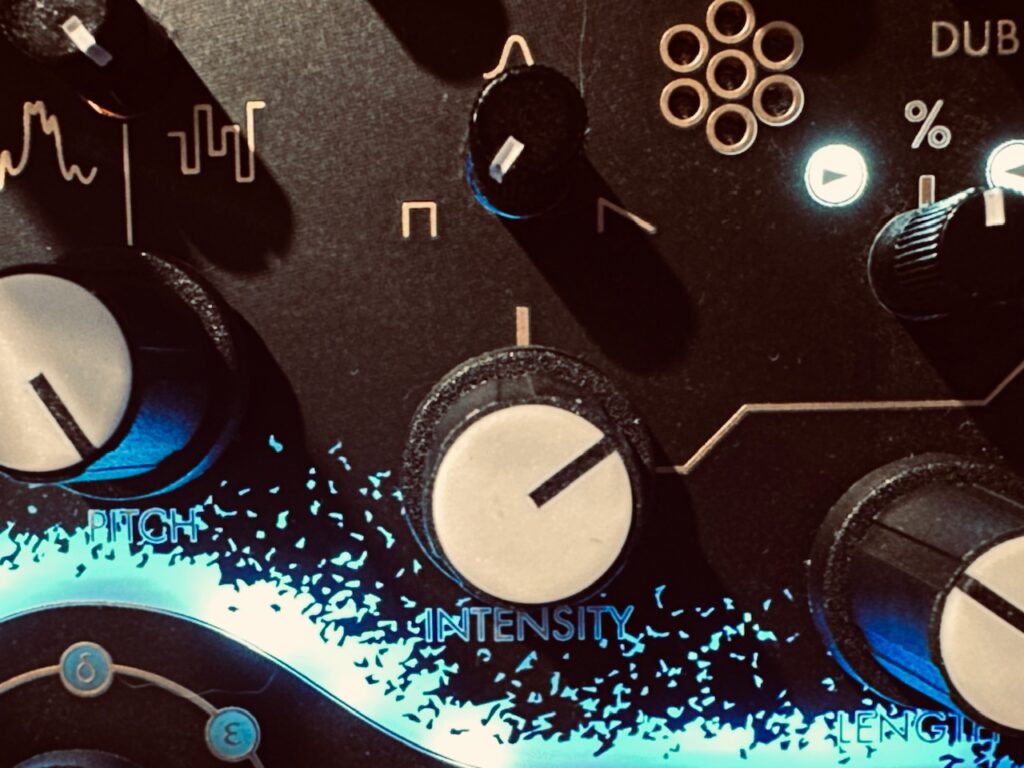

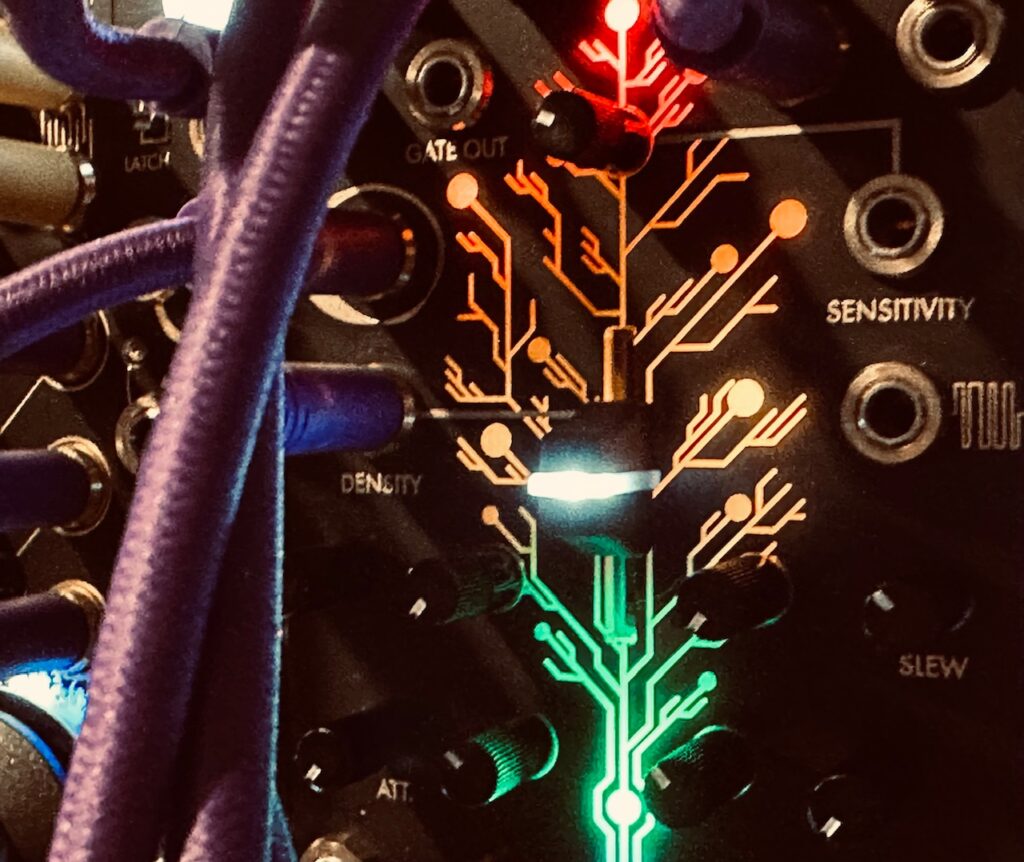
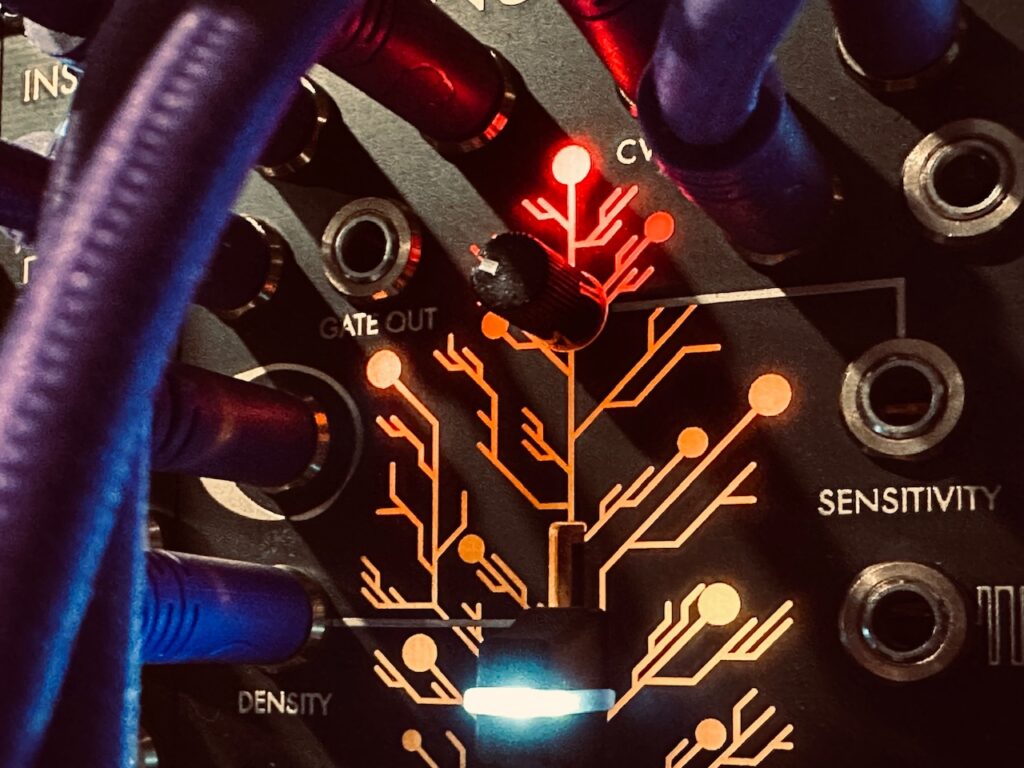

Improvised and recorded in one take on iPad in AUM via the Expert Sleepers ES-9.
Modules Used:
Glasgow Synth Guild Oct tōne
Instruō Tš-L v2
Instruo I-ō47
Instruō Cárn
Instruō Lúbadh
Instruō Arbhar
Instruō Cnōc
Instruō Tágh
Instruō Vincǎ
Instruō SCÍON
Instruō Øchd
Instruō Øchd Expander
Nonlinearcircuits Divide & Conquer
Vostok Instruments Asset
Xaoc Devices Zagrzeb
Addac System Addac814 6×6 Stereo Matrix Mixer
ST Modular SVCA
Intellijel Amps
Intellijel Quad VCA
Knob Farm Ferry
Outboard Gear Used:
Walrus Audio Slöer
Noisy Fruits Lab Lemon
- Though Oct tōne is not an official Instruō module, it was designed by Jason in the style of Instruō, using the same graphic and design language, and so it goes in the Instruō case. ↩︎
- Sadly, the Oct tone is limited to these scales, with no option to program your own via SCALA files or some other method. The available scales are Chromatic, Major, Major Pentatonic, Minor Pentatonic, Harmonic Minor, Whole Tone, or Unquantized. ↩︎
- I also have Dradd(s), Beads, Cornflakes, Brinta, and Typhoon, and I use all of them because they’re all different. ↩︎
- All granular processors must playback from a recorded buffer. However, some processors continuously record to a buffer of a certain length. ↩︎
- Although the new Tagh is a more flexible and varied device, I’ve not replaced the OG for specific reasons. Perhaps more than any other Instruō module, the new Tagh embodies the trend of shoving more and more features into ever-smaller spaces, while hiding these various bits of functionality behind cryptic button combinations and even switch wiggles. On top of that, and definitely a secondary or even tertiary concern, is that the OG Tagh has one of the most unique panels in all of Eurorack, being a beautiful piece of functional art. ↩︎

